GOLDMAN PRIZEWINNER SHOOTS UP FOREIGN MINING FIRMS IN MONGOLIA
WESTERN DECEPTIONS AND THE EXTINCTION OF THE NOMADS
Predatory capitalism has invaded Mongolia — the savage western hordes overrunning the land — and but for the recent Hollywood movie spectacle Mongol [1] and colorful travel magazine articles no one in America hears much of anything about the place. Behind the bells and whistles promoting ‘democracy’, ‘conservation’, ‘human rights’, and a ‘free press’, Mongolia is under attack and the people suffering a world of hurt. The same companies destroying Mongolia are destroying Congo and Canada and everywhere else they appear. Meanwhile, three years after winning the Goldman Environmental Prize — the ‘Green Nobel’ — Mongol herder Tsetsegee Munkhbayar shot at foreign mining operations and thus he is denounced and shunned by the same foreigners who recognized him as a hero. This is a story about the killing of the earth, the killing of truth, the killing of hope — and the killing of the nomad’s way.
In early September 2010, a small band of Mongolian citizens armed with hunting rifles opened fire on gold mining equipment owned by two foreign mining firms operating illegally in northern Mongolia. One of the four armed activists was Tsetsegee Munkhbayar, a 2007 winner of the prestigious Goldman Environmental Prize — the ‘Green Nobel’ — awarded annually to pivotal environmentalists taking a stand around the globe.
“With unwavering passion,” reads the National Geographic Emerging Explorers profile of Tsetsegee Munkhbayar, “he inspired thousands of local villagers, held press conferences, organized town hall meetings, lobbied legislators, and led protest marches — mobilizing an unprecedented level of grassroots participation among citizens who previously felt they had no power to shape government policy.” [2]
Three years after winning the award — and a whole lot more illegal mining and pollution later — Munkhbayar’s little gang of four and their militant actions against the capitalist invasion remain in complete media whiteout in the western press: it’s as if the early September shootings never happened. While the civic activists face possible prosecution and extended jail terms — if not sudden unexplained death — rapacious mining companies further plunder and pollute the land.
The gang of four — Tsetsegee Munkhbayar, G. Bayaraa, D. Tumurbaatar and O. Sambuu-Yondon — are environmentalists from the United Movement of Mongolian Rivers and Lakes (UMMRL), a consortium of Mongolian groups organized to fight foreign extractive industries that have invaded the fledgling ‘democracy’. UMMRL was formed in June 4, 2009 after its predecessor, the Mongolian Nature Protection Coalition (MNPC), dissolved in the spring of 2008. Tsetsegee Munkhbayar — and many collaborators he works with — was pivotal to the creation of both MNPC and UMMRL.
Behind the story of Tsetsegee Munkhbayar is a story of greed, private profit, deception, betrayal, stealth and heartbreak. Just three years after becoming a global hero, Tsetsegee Munkhbayar is today shunned by the people who lobbied to make him a Goldman Award winner, and they have even branded him and his colleagues as terrorists.
“The shooters sent a powerful message,” reported EurasiaNet, the only foreign media outlet to report on the recent shooting action. “Puraam, a Chinese firm, and Centerra Gold, a Canadian-operated company, “aren’t welcome in the area, one of Mongolia’s only forested regions.” [3] Centerra is also operating in Kyrgyzstan, a former Russian republic where paramilitary government forces repressed public protests and shot hundreds of unarmed protesters in 2010. [4]
Centerra Gold and Puraam Mining are operating on 168 hectares of land and contaminating the headwaters of the Selenge, Mongolia’s largest river, and the source for Lake Baikal, the world’s largest freshwater lake. The Gatsuur deposit, currently exploited by Centerra Gold, contains an estimated 1.3 million ounces of gold valued at tens of billions of dollars. Centerra’s Boroo gold mine began production in 2004 and yields an average of 180,000 ounces of gold annually.
The locals see very little from the gold taken from their lands. At least 70% of the population lives in absolute poverty. Alcoholism is a national epidemic. The social fabric is unraveling. Human trafficking is a big business. Everything is for sale, or already sold.
“[People] see the 1990s privatization rush and years of harsh weather as a kind of economic one-two punch. Twenty years after Mongolia peacefully threw off 70 years of communism, one-third of Mongolia’s 2.9 million people live below the poverty level of less than $2 a day; even white-collar workers like doctors and teachers can earn as little as $300 a month.” [5]
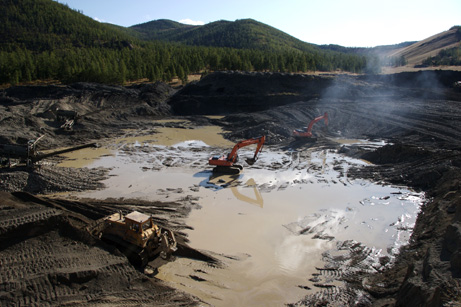
Mining operations devastate the sensitive Mongolian environment. Photo credit: unknown.
The mining companies arrived in Mongolia hand-in-hand with the international NGOs — euphemistically called ‘non-government’ organizations — and they promote the western imposed ideal of ‘privatization’. The unstated assumptions that came along with this are that freedom-loving westerners are uniquely qualified to teach Mongolians about democracy, human rights, good government and environmental stewardship. Tsetsegee Munkhbayar was patronized and promoted by this framework of foreign intervention.
“According to the promoters,” writes Dr. Joan Roelofs, “the precondition for such benefits is a ‘free market’ economy, or the adoption of ‘neoliberalism’, which entails the privatization of most government functions, deregulation of business, abolition of subsidies and welfare, and availability of all assets (land, TV stations, national newspapers, etc.) for purchase by any corporation, regardless of nationality. Freedom also means that foreigners can start any business anywhere…” [6]
A HERO’S WELCOME
“Tsetsegee Munkhbayar spent his childhood herding yaks on the banks of the Onggi, one of Mongolia’s largest rivers,” wrote National Geographic in their Emerging Explorers profile. [7] “About 60,000 people and one million head of livestock depended on the powerful waterway. But in the early 1990s the essential life source began shrinking, grew contaminated, and by 2001 water that had coursed through his village for centuries had vanished — leaving a rocky riverbed, thirsty herds, and devastated families.” [8]
“The dramatic dry-up was the result of unregulated hydraulic mining that used high-pressure water systems to extract gold and other minerals,” the National Geographic continues. “With more than half the nation’s land granted to mining, the effects were rapid and enormous — 1,500 rivers and creeks were cut off and 300 lakes were emptied. Desperate for drinking water, Munkhbayar’s family and neighbors dug wells. But groundwater was so contaminated that dozens [sic] of local children suffered serious liver damage. Munkhbayar’s son was taken ill, and his mother lost her life.” [9]
As a child, Tsetsegee Munkhbayar dreamed of his hero, Chinggis Khan, the great horseman of the Mongolian steppes, and of becoming a respected herder in the long nomadic tradition of his family. After the heartbreak of seeing his native Onggi River run dry due to unregulated foreign mining, and seeing his people and their herds dying from toxic pollution related diseases, Tsetsegee Munkhbayar took action, organized people, challenged corporations and government.
“The Onggi River Movement he co-founded convinced government officials to expand and enforce mining regulations, pass new legislation, establish citizen oversight for the entire mining process, and start environmental restoration work. As a result, 35 of the 37 mining operations in the Onggi river basin stopped destructive operations, the worst offender shut down, and for the first time in years the river flows again. Munkhbayar went on to unite 11 river movements, creating the Mongolian Nature Protection Coalition, one of the nation’s most influential civic and environmental organizations.” [10]
It wasn’t long before Tsetsegee Munkhbayar was noticed by the experts at the The Asia Foundation, a San Francisco-based ‘think tank’ and ‘advocacy’ organization that meddles, quite deeply, it turns out, in the foreign affairs of ‘repressive’ nations (e.g. China), little island protectorates involved in ‘counter-insurgencies’ (e.g. Philippines), former Soviet Republics (e.g. Kyrgyzstan) and so-called ‘failed states’ where the United States just happens to be prosecuting all out war (e.g. Afghanistan & Iraq).
“On Monday, April 23, 2007, Tsetsegee Munkhbayar of Mongolia, founder of a mass citizen’s movement to protect Mongolia’s national waterways, won a 2007 Goldman Environmental Prize — the largest accolade in the world for grassroots environmentalists,” wrote TAF’s director at the time, Bill Foerderer Infante. “Often referred to as the ‘Green Nobel,’ the $125,000 annual award was established in 1990 by San Francisco civic leader and philanthropist Richard N. Goldman [11] and his late wife, Rhoda H. Goldman, to recognize outstanding individuals who are combating pressing environmental challenges, and was created to allow these people to continue their important work.”
“The only Asian recipient of the award this year,” Bill Infante continued, “Mr. Munkhbayar, 40 [at the time], was recognized for having successfully pressured 35 of 37 mining operations working in Mongolia’s Onggi river basin — a precious drinking water supply for rural Mongolians — to permanently stop harmful, ruinous mining and exploration activities. Beginning in 2001, and with a volunteer staff of more than 2,000 people, Mr. Munkhbayar’s Onggi River Movement organized multi-province roundtable discussions and launched high-profile radio and television campaigns to build public awareness.”
After winning the Goldman Environmental prize in 2007, activist Tsetsegee Munkhbayar was widely celebrated by western institutions and the English-speaking press for his peaceful and collaborative achievements in uniting nomads and organizing civil society to protect Mongolia’s environment. Tsetsegee Munkhbayar was not just an environmentalist, he was a national hero, standing up for ordinary people and basic human rights, a former herder turned national spokesman who rose out of the backward and repressive social milieu of communism in collapse. Tsetsegee Munkhbayar was rewarded for speaking up — an action unheard of in Mongolian society — in the former Soviet-run communist republic turned ’emerging democracy’ of Mongolia.
HOME, HOME ON THE RANGE
I found Tsetsegee Munkhbayar and other key river movement activists from around the country at the offices of the Onggi River Movement in Mongolia’s capital city, Ulaanbaatar. [12] Tsetsegee Munkhbayar is every bit a man deserving of awards.
“In Mongolia it is nonsense to speak about ‘pollution’ when the entire water source has disappeared,” Tsetsegee Munkhbayar told me. “Because of climate differences — it is not like the United States — we have to completely prohibit the use of water in Mongolia.”
The year 2000 saw massive livestock die-offs in Mongolia due to a regional climate condition called zhud — meaning that water resources in Mongolia were always scarce to begin with–exacerbated by global climate instability. Hardest hit were small-scale Mongolian herders. Zhud struck again in the winter of 2010, killing some 8 million (17%) of the country’s livestock.
However, zhud has now become another business in Mongolia: absent the appropriate land management policies, or the enforcement of laws, in a system rife with corruption, the effects of climate mayhem have been exacerbated by government officials with over-sized herds who capitalize on ordinary people’s losses and monopolize government subsidies, capitalize on western donors’ support, and dominate the best grazing land.
A landlocked nation of steppes and desert, Mongolia is known mostly for its nomadic herders and heroic former leader Chinggis Khaan. [13] With an estimated $1.3 trillion worth of untapped mineral assets, according to Eurasia Capital, a predatory Hong Kong-based investment bank, “the investment world is eagerly eyeing opportunities in Mongolia”.
Capitalism arrived in Mongolia circa 1990 and the people saw more than 60 years of communist propaganda dissolve into capitalist propaganda overnight. Suddenly, everything that was bad was good, and everything that was good was bad. Now they are seeing the reality of capitalism.
The rapid expansion of rapacious profit-driven ecotourism is destroying Mongolia’s culture, people and land: Mongolia is the new wild, wild west, the last frontier. Tourist camps and lodges run by ‘entrepreneurs’ wielding the power of private-profit have sprouted up in pristine wilderness where only herders once roamed. More and more herders are landless and herd-less.
Big mining companies have forced more and more nomads into the sprawling poverty of ger cities. [14] Communities of herders that have stood up, peacefully and unarmed, for their environmental and human rights — clean air, clean water, clean pastures — for more than a decade. Mining and logging have dried up or poisoned whole rivers. Increasingly aggressive responses from increasingly desperate communities have been met with paramilitary violence and illegal western-style ‘legal’ actions in the elite-controlled courts.
The poverty in cities takes many forms: homelessness, over-crowding, squatting, slave labor. The urban poor — increasingly desperate and disillusioned — have robbed Ulaanbaatar’s graves of sacred artifacts that were long ago buried with the ancestors: pried open and ransacked, skulls and skeletons spill out of crumbling wood caskets.
Thousands of street children were living in Ulaanbaatar’s underground sewer systems in the dead of the Mongolian winter (even in the cities temperatures plummet to minus 20 or minus 30 degrees in winter. Hundreds of people work each day picking through garbage in the city dumps; many of them live there.
Preying on the country’s 2.9 million people and polluting the vastly unpopulated land, transnational corporations backed by foreign governments and the western intelligence apparatus are plundering what some call ‘the Saudi Arabia of Central Asia’. The same companies are plundering Mongolia as Congo and Canada, for example, and Western mining works in league with NGOs claiming to be working for Mongolia’s conservation and development and freedom.
OUR MONGOLIAN LAND
“The government has sold out to mining companies and the government is fully under their control,” said M. Bold, a leader of the civic movement My Mongolian Land. [15] A former military commander, M. Bold’s movement attracted many other military — former soldiers disillusioned and disenfranchised by government. M. Bold has often been propositioned to take a bribe. He is worried about his life. “But someone has to speak out,” he said. “If not me, no one will.” [16]
Formed in 2005, My Mongolian Land organized 29 public protests between 2005 and 2008, averaging 7000-8000 people in each; the biggest was 13,000 people. To protest corrupt government deals that completely sold out to Ivanhoe Mines — one of the most notorious western corporations in Mongolia [17] — the group camped out for weeks on the streets of Ulaanbaatar in April 2006. One of the largest mass gatherings in Mongolia’s history, they even burned an effigy of Ivanhoe’s mining magnate Robert ‘Toxic Bob’ Friedland. M. Bold shows me the minerals map of Mongolia — specked and dotted with deposits all over the land.
“Many top Mongolian military officials are linked to corrupt government officials,” M. Bold told me. “It’s not the ‘Democratic Party’ and ‘Communist Party’ fighting each other in Mongolia, it’s actually mining companies fighting for power and control.”
Western corporate lawyers sent by the mining companies have helped create tax and mining laws favorable to multinational corporations. Since 1991, the most progressive mining laws — hard fought for, hard won — have been reversed at least three times for the benefit of foreign extractive industries. However, most of the mining laws were copied over from Canada in 1997. Also helping to impose favorable mining and other laws are big western NGOS.
“As a newly developing ‘democracy’ we don’t know how to control these NGOs and their projects,” said M. Bold. “The money just cycles back to foreigners — advisers, experts, consultants — and these foreigners live very comfortably in Mongolia. There are so many of them. And we don’t know what they are doing.”
The big NGOs in Mongolia include the Soros Foundation, World Wildlife Fund, Conservation International, The Nature Conservancy and The Asia Foundation–funded by USAID, [18] CIDA [19], JICA [20], DFID [21], DANIDA [22] World Bank, Asian Development Bank, and the KEIDENREN [23]. The big conservation and human rights NGOs work to ‘protect the environment’, but only selectively. They protect Mongolian resources from western capitalism’s competitors — from China, Korea and Russia, in Mongolia’s case — and blind the Mongolian people to the truth.
Saruul Avgandoorj is a former school teacher turned green movement activist from Hongor village, next to the mining metropolis of Darkhan — where mining has poisoned the whole village with cyanide. We meet in the ‘Veteran’s Building’ in Ulaanbaatar, where green movement and human rights activists have converged to form an alliance against government corruption and human rights abuses. They are also waging a war of occupation to hold onto the last public meeting space they have.
“Babies have been born with deformities,” Saruul Avgandoorj tells me, “and there have been more than 30 miscarriages. There are many birth defects in cattle too. Around 15 people died — not old people — of the same symptoms.” [24]
Problems in this case are caused by the Chinese gold mining company ‘Mich’, partnered with the government of Darkhan and a federal parliamentarian official named Mr. Khayanharvaa. “He poisoned the whole village — the cattle, the humans, the environment, the water,” says Saruul Avgandoorj. “He purchased and manipulated votes [in a recent election]. Now the green movement in Mongolia works in solidarity with human rights groups.”
In early July 2008 thousands of people protested the rigged national elections. Police responded with bullets, massive arrests, tortures, disappearances and secret trials. The western press produced superficial reports, but like most substantive news, the post-elections violence was mostly in whiteout. Saruul Avgandoorj, now the National Green Party leader, and Arslan Gombosuren, leader of the Mongolian Citizens for Justice Movement, were imprisoned for 14 days in August 2008 for sitting down in a public place with pieces of tape emblazoned with the Mongol word for ‘release’ taped over their mouths. [25]
The Asia Foundation (TAF) provided ‘election observers’ — more US government funding — but according to Mongolian civil society organizations the entire show was a farce; even foreign expatriates agreed. Director Bill Infante published TAF reports claiming that the elections were ‘free and fair’ — it’s too bad about the elections-related violence, he said, dismissing it — but a good example of an ’emerging democracy’ in the making.
“They [TAF] called the elections ‘free and fair’, and they were quoted by all the western newspapers,” said ‘Bayarma Ganbold’, a Mongolian civic activist afraid of being targeted for speaking out, “and they never changed their story, even when it became obvious it wasn’t true. Bill Infante’s wife Bettina started a public relations company with government candidates as her clients. Bill and Bettina created all this propaganda about how wonderful the elections were. But the elections were fixed from the beginning to the end.” [26]
In October 2008, some 230 innocent civilians — over 70 teenagers and 130 people aged 19-21 — remained locked in brutal Mongolian jails after police swept the streets in early July arresting 823 people. Mongolian witnesses claim that the post-election ‘riots’ of early July were designed to justify arrests, since they were manufactured by neo-Nazi provocateurs tolerated and promoted by police. More than 72 people disappeared, while official tolls reported only five people killed. Far-right groups in Mongolia are proliferating, and the neo-Nazis allegedly serve as mafia thugs for government parliamentarians and other recipients of western largesse. [27]
“The government hid the facts,” said ‘Bayarma Ganbold’, “and The Asia Foundation played along. They were partners in crime. We’ve made the human rights situation known to international human rights organizations — Human Rights Watch and Amnesty International — but they haven’t responded.”
In 2009, Amnesty International published a report blaming the July 2008 violence on ‘riots’: there was no mention of western interests in elections-rigging or neo-Nazi provocateurs who instigated the ‘riots’. [28]
Those arrested were tortured into signing confessions, denied legal representation, tried in groups in secret government trials, and some were sentenced to 15-20 years in prison. A few people with money were able to buy their way out: one family paid $11,000 to police to release their son, who they quickly packed off to South Korea for safety.
Saruul Avgandoorj described how the George Soros Foundation funds a lot of police projects in Mongolia, projects like the ‘Police and Community Cooperation’ and ‘Achievement of a New Level’. “But we don’t know what they do,” she said. “Many [foreign] NGOs and organizations are working as agents for [corrupt] politicians. No one realizes the catastrophe that is unfolding here.”
NON-GOVERNMENT EUPHEMISM
In the beginning, Tsetsegee Munkhbayar had a very positive understanding about The Asia Foundation (TAF), which had been working in Mongolia since (at least) 1990. One of the local Mongolia partners for the World Bank, TAF helped build the Mongolian Nature Protection Coalition (MNPC), an alliance of eleven domestic civil society conservation NGOs created through the organizational skills and respectful dialog of Tsetsegee Munkhbayar and his colleagues.
TAF financed a variety of Onggi River Movement projects with some $10,000 over four years, 2004-2008. In 2007, the first year of the MNPC, TAF donated $US 120,000 to be shared amongst eleven groups of the coalition; TAF gave $60,000 in 2008.
While pitching a few thousand dollars to the MNPC, TAF was at the same time filling its coffers and funding its foreign salaried professionals with money earned by leveraging the success story of Tsetsegee Munkhbayar and the Goldman prize TAF won him.
In 2006, for example, TAF used the success story of the Onggi River Movement and MNPC to leverage 2.7 million Euros ($US 3,630,000) from the Dutch government for a TAF project titled ‘To Guarantee the Future’. It wasn’t long before TAF dropped the Mongolian Nature Protection Coalition altogether and the coalition disbanded. By October 2008, the MNPC hadn’t seen a penny of the Dutch funds.
It was the salaried professionals at TAF who nominated Tsetsegee Munkhbayar for the Goldman Prize, and an investigation into their motivations, their ties to big business and other facts, reveals that their agenda is not as pure as they would like the world to believe. In nominating and awarding Tsetsegee Munkhbayar, the people at TAF also wrote the script for his environmental heroism — not out of concerns for the environment, but to guide and shape the environmental movement to suit TAF — and the western corporate template for ‘social activism’ in an ’emerging democracy’. TAF and their partners and sponsors used Tsetsegee Munkhbayar as a tool in their multibillion dollar plans for ‘shaping’ Mongolian civil society in the interests of western penetration and control.
While pumping money into domestic civic organizations, subversive neocolonial entities like TAF also impose limitations on grant recipients. NGOs affiliated with the MNPC began to notice ‘donor preferences’–where funds were channeled to the NGOs that remained more silent and acquiescent about government policies, and especially those that did not protest against mining companies. Mongolian NGOs were expected to defer to TAF when dealing with the media, and they were compelled to sign contracts forbidding them from publicly protesting against mining companies or government policies. TAF also worked to determine and control the members of the boards overseeing the environmental coalitions that received TAF funds. Ultimately, river coalition members found they had no control over their own groups: TAF tried to maintain all control. [29]
Indigenous activists like Tsetsegee Munkhbayar are encouraged to ‘cooperate’ and subordinate themselves to powerful foreign NGO entities in a multitude of ways — much like self- and other forms of censorship in the western press model. That they will not cross a certain invisible but tangible line is expected of them. When members of domestic organizations like Tsetsegee Munkhbayar “make ‘noises’ in society they draw[s] public attention to issues which either are not known or were not able to be known previously due to a lack of access to information, secrecy and distance from the areas where issues exist.” [30]
PICTURES WORTH A THOUSAND HERDS
“TAF paid one photographer $90,000 — Ted Wood from the United States — to do some pictures in Mongolia,” said one MNPC activist. “Meanwhile all eleven MNPC organizations, with $120,000 to split between them in the first year [2007], were tasked with buying computers and other equipment and establishing an environmental protection network across all Mongolia.”
According to his own biography, Ted Wood — TAF’s $90,000 contractor in 2007 — is a Boulder, Colorado (USA)-based freelance photographer and author “who specializes in natural history and environmental images. He has photographed for Vanity Fair, Los Angeles Times Magazine, The New York Times, National Wildlife, and Outside,” and he is a contract photographer with Aurora Photos and Getty Images.
Ted Wood’s photographs from Mongolia were used in part for books peddled by TAF as part of their effort to penetrate Mongolian culture with ‘educational’ materials infused with western values and norms about private profit, individualism, and ‘free-market’ competition. [31] However, not one of the elite US magazines that Ted Wood shoots for have published anything substantive about the western mining, human rights atrocities, or other foreign meddling in Mongolia.
In fact, Ted Wood also formed an NGO in the United States called Conservation Ink whose self-advertised mission “is to support conservation and environmental awareness in natural and cultural areas through the production and distribution of educational materials.” The financial sponsors of Conservation Ink include the National Geographic Society, USAID, The Nature Conservancy, Wildlife Conservation Society, The Asia Foundation and — no small surprise — the Ivanhoe [Mines] Community Development Fund. [32]
“I suggest you contact Ivanhoe,” said Jeremy Schmidt, co-founder of Conservation Ink, responding to questions about their grant from Ivanhoe Mines. “Alyson Croft was our contact with the Fund at the time of the grant we received. It was 2004 or 2005, a small grant to translate our Gobi map-guide into Mongolian for free local distribution.” [33]
Alyson Croft is the wife of Layton Croft, the former Mongolia country director for The Asia Foundation and, as we will shortly see, he was one of Tsetsegee Munkhbayar’s primary advocates with the Goldman Foundation.
National Geographic has used some of Ted Wood’s images. In a single on-line story they did which talks in any detail about mining in Mongolia — a story where they cite Tsetsegee Munkhbayar — National Geographic blamed Mongolia’s mining woes on Chinese and Russian firms, and on small-scale Mongolian miners — mom-and-pop herder families struggling to eke a living out of the harsh, cruel world that wiped out their herds — and the only hint of any western mining involvement was in a quote they inserted by Ivanhoe Mines spokesman Layton Croft.
Mining companies are always downplaying the size of mineral reserves, and western mining companies are not to blame for anything, they say, since they have hardly arrived in Mongolia and haven’t even begun to exploit the resources. Anyways, big things are in store for the lucky communities nearby, they promise.
“Mining to date has been relatively small-scale,” said Layton Croft, an executive with Ivanhoe Mines, a Canadian company with a massive copper and gold mine development project in southern Mongolia. The boom really hasn’t yet started. The prospect of mining is what’s on everyone’s mind.” [34]
The statement was both true and false at once. More interesting however is how the western invaders quote each other, slap each other’s backs and butter each other’s bread, how the western media uses these select experts to give voice to select ideas, and how the money cycles back and forth between them — perpetuating the propaganda and private profits of predatory capitalism.
FOLLOW THE MONEY
Substantial efforts (2005-2006) by Layton Croft, TAF’s former Mongolia Country Director, and William Foerderer Infante, his successor, to lobby the Goldman Fund paid off when Tsetsegee Munkhbayar traveled to San Francisco, California (USA) to receive the $125,000 cash prize (2007).
Robert Redford introduces Tsetsegee Munkhbayar and the other 2007 Goldman Prize winners in the moving Goldman Foundation video. [35] The video applauds Tsetsegee Munkhbayar for his organizational skills and peaceful, collaborative approach. One mining company public relations executive–a Mongolian giving mining a Mongolian face — talks about restoration done by their mining company, suggesting a progressive mining climate in Mongolia, where companies comply with environmental stewardship, perform due diligence and work with communities. The video paints a happy and collaborative picture over the brutal realities attendant to the clash of civilizations.
And then, at minute 4:18 in the Goldman Fund 2007 video we meet Mr. Layton Croft, who left TAF in 2005 to become Vice-President, Corporate Affairs & Social Responsibility, for Ivanhoe Mines.
“The key to [Tsetsegee] Munkhbayar’s success as a leader for responsible mining in Mongolia,” says Layton Croft, in the Goldman Prize video, “is that he’s had the courage to acknowledge that mining could be good for Mongolia, as long as it’s done in a very open and participatory way.”
Layton Croft began his career as a Peace Corps volunteer in Mongolia (1994-1997). He later joined the Mongolian office of the big US government and intelligence organization PACT [36], where he was the Program Director for Information Systems for their Gobi Regional Economic Growth Initiative/Mongolia (1999-2002), working for PACT-Mongolia in an alliance with Mercy Corps and USAID.
One of Layton Croft’s USAID-backed projects with PACT involved bringing National Public Radio founder Bill Siemering and NPR personality Corey Flintoff to Mongolia to promote the USAID-funded fiction of ‘free and independent’ media. [37] Another PACT project Croft was involved with created and broadcast a TV sit-com “where marginalized herder and non-herder business operators are learning new skills to manage their diversified businesses for higher returns via a 26-episode educational TV soap opera broadcast on Mongolian National TV.” The show had more than 400,000 viewers. [38]
Such foreign created and controlled propaganda is not purely entertainment: like the ‘educational’ books peddled by TAF and the TV sit-coms created by PACT, these programs rely on ‘behavior change communications’ — analyzing and changing local content to change attitudes and eventually change behaviors; creating desire, opening up new markets for western commodities, and selling advertising. [39]
Layton Croft’s next career step was TAF, 2003-2005, where he lobbied the Goldman Foundation to recognize Tsetsegee Munkhbayar.
Layton Croft’s experience working with and for the big NGOs — Soros Foundation, Mercy Corps, PACT, USAID, TAF — certainly enhanced his next career move. Since 2005, Layton Croft has been the Executive Vice-President for Corporate Affairs and Community Relations at South Gobi Resources, an Ivanhoe Mines/Rio Tinto megaproject, and he is an “advisor for investor relations in Asia and corporate social responsibility” for Ivanhoe Mines. Alison Croft, his wife, works in ‘community relations’ with Ivanhoe Mines.
As the newly hired public relations executive for Ivanhoe Mines, Layton Croft wasted no time in accusing Mongolian civil society groups — including some of his former allies when he worked at TAF — of betraying the public. One of his first major public relations whitewash came in April 2006, when the effigy of ‘Toxic Bob’ Friedland was burned by My Mongolian Land, the Green Movement, and other civic groups.
“We also overturned Ivanhoe cars in 2007 protests,” M. Bold from My Mongolian Land told me. “Ivanhoe wanted to get a contract like the government had with the Canadian company Boroo Gold. They [Boroo] were robbing us for more than ten years (1997-2007). In one year of operations they used 800 tons of [toxic] chemicals [40], so they were also destroying the place: it’s not useable for centuries. The company produced the only reports about water, for example, and what a wonderful job they were doing.” [41]
“The [Ivanhoe] company deeply regrets the fact that civic movements are misleading the Mongolian public by misrepresenting the real facts in order to further their own political interests,” said Layton Croft, Executive Vice President for Corporate Affairs for Ivanhoe Mines. “As a public company listed and traded on the New York and Toronto stock exchanges, Ivanhoe Mines respects the independence and sovereignty of the countries where it operates. To this end, Ivanhoe has not and will not interfere in internal Mongolian political affairs,” Croft said. [42]
In 2007, Ivanhoe mines came very close to physically changing the direction of the Kherlan River, but it was the intervention of the Mongolian Nature Protection Coalition (MNPC) that stopped it. Tsetsegee Munkhbayar and Clayton Croft engaged in a heated argument about this at a public meeting.
“Ivanhoe Mines had their own people already elected to Parliament,” said M. Bold of My Mongolian Land. “We don’t want Mongolia to be a playground for these criminals and their corruption. Our country is in grave danger.” [43]
SHUNNED BY SPONSORS
On May 30, 2005 members of the Onggi River Movement traveled to Arkhangai aimag [44] to organize an MNPC training workshop for local herders facing critical water stoppages on the Nariin Hamar River in Tsenkher soum [45]. During the training an excited herder on horseback arrived to alert them that a new mining company was commencing operations at a new site on the river at that very moment. The workshop drew 128 people, and all of them moved quickly to the new site where a Mongolian company called Mongol Gazar was setting up a new ger camp.
Blocked from the site by armed security guards, the herders were attacked after they told the company personnel to immediately leave their land. The security guards tear-gassed the angry herders, beat them and shot into the air. A professional cameraman from Mongolian National Broadcast TV who was attending the rivers movement training was attacked, his equipment destroyed, along with all evidence of the attacks of violence by security guards. Herders were arrested and threatened by the company, who warned that Mongolian law protected all mining companies from protest.
For Tsetsegee Munkhbayar, this incident signaled his evolving awareness of how far mining companies would go — and how ruthless — to protect their stolen interests. Barely one year after Tsetsegee Munkhbayar was awarded the Goldman Prize he and his colleagues asserted their independence even further — much to the disapproval of the people at TAF — and they began to suffer for it immediately.
On May 16, 2008, at another protest in Selenge aimag, herders of the Khuder River Movement — another MNPC member organization — faced similar violence from armed guards with the Erdes Group, an iron and gold company. Erdes guards had guns and batons and they intimidated the river movement herders into keeping their distance.
A Mongolian front company with Chinese investors behind it, Erdes Group is partnered with Chul Uun, the governor of Selenge aimag and ex-president of the Mongol Bank. The company clear-cut the local forests, but they left a wall of trees intact at the front of the clear-cut to disguise the devastation behind. [46] Similarly, Erdes Group publicly championed ‘restoration’ that never happened. Due to the protest, the company halted mining for two months, bribed everyone they could, and started up again. Bulldozing everything in sight, they turned the forest into mud and chopsticks — processed at their nearby factory, exported to China. [47]
By the spring of 2008, Tsetsegee Munkhbayar finally began to understand that TAF was acting against the interests of Mongolia and protecting the mining companies. When the Onggi River Movement demonstrated its independence, really taking on mining companies aggressively, TAF at first lobbied the Onggi River Movement to soften its approach, and then they attacked them.
Meanwhile, the mining companies had become increasingly violent in response to the successes of the conservationists in organizing civil society against illegal mining, privatization of natural resources, corruption in government, and the overuse and degradation of the commons. More and more, companies deployed armed security guards. Across the country there was a rise in attacks on herders and conservationists who protested the illegal land grab and environmental destruction of mining operations.
Tsetsegee Munkhbayar and his colleagues saw clearly that the government was not enforcing the environmental protections brought into law in previous years. It was the duty of the Mongolian government to regulate companies, they said, but the government was not doing so. There were no protections of citizen’s basic human rights and the environment. More and more herders and their herds were suffering due to mining and whenever the Onggi River Movement organized a protest in the countryside they were met by armed thugs.
Then on May 26, 2008, six of the member organizations of the Mongolian Nature Protection Coalition (MNPC) organized a press conference announcing their intentions to defend themselves and their lands with rifles — promising to meet intimidation and violence with a show of armed self-defense. Leading the charge was Tsetsegee Munkhbayar.
Given the MNPC’s commitment to defend their basic rights and sovereignty, on May 30, 2008, TAF dropped the Onggi River Movement and the five coalition partners who had pledged to defend themselves. TAF immediately began smearing and discrediting Tsetsegee Munkhbayar and the other environmentalists by issuing a letter expressing TAF’s ‘disappointment’ that they ‘threatened violence and the use of weapons’. The letter was reportedly picked up by the Mongolian newspapers — the state propaganda apparatus — and stories appeared that discredited and divided the MNPC. [48] Soon Tsetsegee Munkhbayar and the six MNPC members who stood firm began hearing stories portraying them as terrorists.
TAF director Bill Infante slammed Tsetsegee Munkhbayar and the others publicly and privately. While Bill Infante and TAF apparently circulated their statement about the MNPC [49], TAF never took a similar stance against the armed violence or plunder of resources by foreign or domestic mining companies.
“Since May 30 [2008] Bill Infante has repeatedly called the six environmental groups terrorist organizations,” MNPC activists told me. “He said this personally, when they met face-to-face.” [50]
In a meeting with the MNPC just after May 30, 2008, Bill Infante stated that The Asia Foundation activities are based on U.S. laws: TAF doesn’t follow Mongolian laws. TAF then directed its might at further dividing and co-opting the leaders of MNPC member organizations that did not adopt the stance of direct action and armed self-defense. With the defamation by TAF and the bad publicity that followed — and with TAF’s purchasing power buying the silence of groups and individuals–the Mongolian Nature Protection Coalition (MNPC) collapsed.
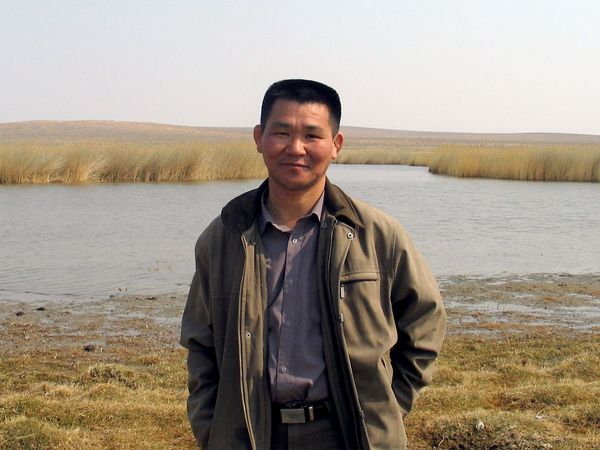
Tsetsegee Munkhbayar, photo by William Infante, The Asia Foundation.
“The [public] letter is in English, and it does accuse them,” said Tracey Naughton, country director for PACT-Mongolia, yet another US State Department ‘non-government organization’ with a ‘democratizing’ mission. “He [Bill Infante] does use strong language and it does say ‘terrorism’. Bill is very competitive and unpleasant and he slams other NGOs in front of donors. The real people who are running Mongolia are the ‘Infantes’ of the world: they’re in all the spaces.” [51]
The Asia Foundation also undermined the MNPC by creating petty jealousies and leadership struggles within the Mongolia river organizations; they pitted the Onggi River Movement and Tsetsegee Munkhbayar against the other members of the MNPC.
On October 28, 2008, Tsetsegee Munkhbayar and five of the eleven member organizations of the defunct MNPC filed a lawsuit in federal court against The Asia Foundation. The coalition sought $1,000,000 compensation for the damages caused by TAF publicly branding the five organizations ‘terrorists’. TAF filed a counter suit, and the Mongolian courts demonstrated their bias in favor of western interests by rejecting both lawsuits as ‘unjustified’. But the damage was already done.
“The MNPC disintegrated,” said Tsetsegee Munkhbayar, “due to conflict created with and by The Asia Foundation. The main interest of The Asia Foundation is to assist mining companies in Mongolia. All events are showing that The Asia Foundation is behind the mining interests.”
CAPITALISM’S TROJAN HORSES
Through the Goldman Prize, TAF created an image of Tsetsegee Munkhbayar as a peaceful and cooperative Mongolian citizen organizing public awareness and politely challenging international mining companies to ‘do the right thing’. According to the TAF video, Tsetsegee Munkhbayar is a local champion of conservation, a proponent of democratic values and the hopeful image of the ‘win-win’ scenario falsely advanced by the mining industry, by NGOs like TAF, and by their agents like Layton Croft and Bill Infante.
But the real mission of TAF is to mold and manipulate domestic challenger groups into positions of cooperative acquiescence and competitive participation with the western plunder of Mongolia — to shape societies, in the interests of predatory capitalism, through cash-driven interventions that divide and conquer domestic groups and create strong constituencies that will serve the interests of the external organizations. It was a condescending relationship from the start, but TAF used Tsetsegee Munkhbayar to enhance their image and advance their interests in the game of international influence-peddling and transnational control.
“The Asia Foundation has really got some slick people.” Conservation expert ‘Jane Smith’ asked that her name be changed to protect her from retaliation. “Using my name and my organizations’ name would jeopardize our lives and years of work here. No one will touch us again. The government and big [international] donors would pounce on us.”
With years of experience in Mongolia, Jane Smith has seen the daily changes. She describes a government with no regulations, a black economy, trading in thugs and violence, where anyone bold enough to take something — those who have the allies and influence — can just take it.
“These big organizations like The Asia Foundation, The Nature Conservancy, WWF [World Wildlife Fund], WCS [Wildlife Conservation Society] and GTZ [German Technical Corporation],” said Jane Smith, “they all came to smaller NGOs like ours and they wanted to learn how to do things — things it took us years to learn — over lunch. They didn’t have any funding for us, and they never took up the ideas that we felt were most important. They have their glossy brochures and they make a show of being interested in the programs that really need to be done, but they don’t really do anything. They are the new wave of colonialists.” [52]
“The Nature Conservancy is one of the richest conservation organizations in the world.” Jane Smith provided examples. “Yet they couldn’t fund their [Mongolian branch] offices here–it took four years to develop the office and it has to fund itself. The ‘sustainable mining’ idea came from The Asia Foundation: they know all the buzz words and jargon. They are really good at throwing around and adapting terminology. It looks good in their presentations and their brochures and government reports, and international donors accept it because they don’t know, or they don’t care.”
“One woman from World Wildlife Fund-Mongolia [WWF],” Jane Smith explained, “Yoko Watanabe, from Japan. [53] She had this long, pedigreed career background. She stood up and gave a beautiful presentation in Ulaanbaatar, for foreign donors, about what WWF was doing across the country. She was talking about all these things WWF supported, like this [redacted project] in [redacted location]. I worked in [redacted] for years, and I thought to myself, ‘Where is this [redacted project]?’ My driver was from the soum center where this [redacted project] was and he cracked up [laughing]. We drove down there and there was this one guy with a shovel…”
“But this [Watanabe] woman was typical of the problem: a young, inexperienced person being hired on and elevated quickly to postions of responsibility, and making decisions on things they know little about, and then they move on to bigger and better things. They are usually removed from, and unaware of, the consequences of those decisions on the ground. They are well-educated, intelligent, not very curious, but they know who butters their bread, and they know exactly what to say and how to say it.”
“I know everyone, they are all nice people,” said Jane Smith. “The head of The Asia Foundation, Bill Infante, he’s really removed from reality and really removed from the local people. [54] There’s no interest in long term development in the country, it’s all about long term development of their careers. They have to spend money — their careers are based on how many projects they can get going and all the assessments and reports they can show to donors.”
“The Asia Foundation helped bring the rivers movement together as a coalition,” Jane Smith continued. “They [TAF] lobbied very hard — especially Bill Infante — for [Tsetsegee] Munkhbayar to get the Goldman Prize. It makes them look very good, but it had the effect of weakening the river movement, which is counter to what TAF claims they are doing, which is strengthening. They brought the heads of the rural organizations and key figures to Ulaanbaatar, gave them nice offices.”
“They basically cut off the heads of the rural organizations. Rather than fighting the mining companies and protecting the rivers they [leaders] were fighting over offices and who would get the best computers. We worked with movements all over Mongolia, and we cautioned against removing the [movement] heads. We had a lot of experience in community development and organizing so that local people could take advantage of the new system under ‘democracy’. Instead of bringing all these river movements together to unite against the mining companies — and say ‘hey, you guys are killing us’ — The Asia Foundation just dropped them.”
DOUBLESPEAK AND GOBBLYGOOK
Interview after interview with Mongolian leaders in Ulaanbaatar confirmed the wall that lower level government officials slam up against when trying to enforce environmental regulations. Environment and human rights activists outlined rapacious logging — including logging in ‘strictly protected’ areas — for the building boom in Ulaanbaatar and they pointed to western mining companies who can do anything they want, anywhere, companies bent on destroying the pristine Lake Hovsgol ecosystem, for example, just as they are destroying the rest of the world.
These corporations are fueling an unprecedented disaster in Mongolia. They begin by corrupting officials and paying bribes in the capital city, and then they show up in rural areas where the local people know nothing about their plans, their methods, or their histories of terrorism and environmental destruction. They peddle human rights and democracy, and then they block off whole valleys, divert and drain vast rivers, throw herders off communal lands, and then arm themselves with thugs. They have their economic hit men and their propaganda experts.
My interviews with the foreign ‘experts’ at the big western NGOs were almost identical. They all threw around the language of sustainable development, democracy, and conservation; they knew exactly what to say and how to say it — if they would meet with me at all. They had fancy brochures announcing all their fancy projects, and when it came to answering the hard questions they became mute, squirmed in their chairs, and suddenly had another meeting to attend. They also threw volumes of information at me, demonstrating — in their eyes — their efficacy and indispensable presence.
I met with Rebecca Darling at TAF headquarters in Ulaanbaatar. [55] As TAF’s Director of Natural Resources and Development/Securing our Future Program, here was a perfect example of a nice, well-educated, salaried, career-track, western NGO professional who knew what to say and when to say it, and whose tune changed depending on her audience.
“We try to get information into the hands of the policy makers,” Rebecca Darling told me. “The past four years saw a lot of nothing happening. In the next four years some very serious decisions will be made about natural resource use. The environment is still in a pretty good state but headed for a world of hurt. Mining companies here are all frustrated because things have been stalled for four years. Mongolia is on the cusp of major changes.” [56]
“They have transparency in mining Canada,” Rebecca Darling continued. Flags went off in my mind when she expressed sympathy for the mining companies, and now she was defending Canada’s mining policies. “Every piece of paper goes [public] there. Here it’s all behind closed doors, and there are no checks and balances. Western companies, Chinese and Russian companies, Mongolian companies — none of them are doing the right thing.”
She admitted that companies are so far out in the Mongolian bush that they can do anything and get away with it. However, she cited the effectiveness of TAF experts, like her, in formulating policy with government officials. She also acknowledged TAF’s involvement in revisions of mineral laws. “Government officials are under-resourced, undereducated, and understaffed,” she added, underscoring her faith in western expertise.
“For example, there’s a Canadian mining company that has a mining site out in Dornod,” Rebecca Darling says. “They have asked The Asia Foundation to come out and deliver community engagement seminars for them, as one of their goals is to have community engagement. We won’t go out to talk to the people about uranium, we go to talk to them about how to talk to the mining company, teaching them where their rights are, what legal avenues they have. We try to build transparency. We are trying to get them to engage.”
“Some citizens engage in unproductive and illegal ways.” Now Rebecca Darling is responding to my questions about civil society protests against mining operations. “They show up at the gates of companies and threaten violence. There are six organizations that threatened violence — all part of a coalition [MNPC] of 13 organizations from across the country. They are still threatening to take up arms, since April [2008]. Now they are threatening to hurt themselves — civil disobedience and stuff like that.” [57]
“Their leader’s name is Munkhbayar, from the Onggi River Movement. We had to cease and desist all support of the [MNPC] coalition. We are not working with these six groups in any way because they broke the law and they advocate breaking the law. Most of them I have a tremendous amount of respect for, they are civic activists, and it’s true that there have already been environmental problems.”
Rebecca Darling holds up Canada as a model of transparency, good governance, and responsible mining and environmental policy. She maintained her storyline even after I provided evidence that Canada-based mining companies perpetuate poverty, human rights atrocities, terrorism and genocide around the world — even in Canada, where First Nations have recently made news, again, for blockading mining. [58], [59]
“Can you do me a favor?” Rebecca Darling asked me at the end of a long interview where my questions were open and my role as a journalist was understood. “Please don’t quote me on anything that’s going to get my ass in a sling without checking with me.”
I’m quoting Rebecca Darling (above) because her private remarks don’t square with her public advocacy in favor of mining and the private profits to be had by TAF and others, against the people. In one commentary she authored, also published on the PACT web site, she extolled the virtues of mining and of NGOs like The Asia Foundation.
“A paradigm shift is underway in Mongolia,” Rebecca Darling wrote in April 2009. “The integration of ‘responsible mining’ and ecological protection in government policy papers, public speeches by elected officials, and platforms of political parties, reflects Mongolia’s growing environmental awareness and commitment to developing the minerals sector in ways that will protect natural resources and benefit all Mongolians. This is the result of significant advocacy efforts on behalf of a committed group of representatives from industry, government, and civil society.” [60]
“Since 2006, The Asia Foundation in Mongolia has convened a Multi-Stakeholder Forum that brings together representatives from civil society, government, industry and academia,” the Rebecca Darling article continued. “After a year of regular meetings, a definition of responsible mining was developed and the Forum defined eight guiding principles. The Forum later elected a smaller group of 15 leaders, representing different sectors, to form a local non-governmental organization, named the Responsible Mining Initiative (RMI) that spearheads advocacy efforts.”
“No, I don’t agree with this rosy article,” Jane Smith countered. “The prime minister recently issued Government resolution 86, which states the intent to allow minerals (gold) exploration in protected areas, and Government ordinance 26, which forms a working group to discuss the possibility of mining in protected areas and to create a new law to allow this. This effectively undermines the Law on Special Protected Areas… The intent is to open up protected areas for anything they want, anywhere, any time… Some of the article may be true, but it’s not the rosy picture Rebecca [Darling] paints. A new law to undermine the protected areas to allow mining is not responsible, and will only degrade, if not dissolve the whole system.” [61]
BLAME THE VICTIMS
Who are the real terrorists? Big industry responsible for terrorism has a long history of attacking indigenous people and/or organizations fighting for their rights and labeling them terrorists. The private profit based western media and its clone institutions — domestic media aligned with corrupt elites and often funded by NGOs like TAF and NED — perpetuate this blame-the-victims inversion of reality and protect the mining interests that fund their rag sheets. Marlon Santi, President of the Confederation of Indigenous Nationalities of Ecuador, is another heroic indigenous leader recently labeled as a terrorist for taking a stand against murderous and rapacious western extractive industries. [62]
When I first contacted the Goldman Environmental Fund’s media relations office in early November 2010, I was surprised to find that they’d heard nothing about their past prizewinner’s armed protest two months earlier. “Technically, we don’t support winners with any more dollars, but we do step in if something is dire,” said one spokesperson. “The Goldman Foundation has some clout, here in the US, and we do work with the State Department. We don’t know how people will behave after they receive the award. In some cases we just let them slip off into obscurity.” [63]
“The Goldman Environmental Prize has recently become aware of 2007 recipient T. Munkhbayar’s armed protest actions in Mongolia,” the Goldman media office wrote, when pressed, in a formal public statement on November 29, 2010. “The Prize does not condone armed protest of any kind. The Prize honored Mr. Munkhbayar for his leadership in Mongolia’s grassroots movement against mining pollution in the region’s waterways and is concerned about the recent developments. We are working to learn more about the situation as we have heard conflicting reports about his involvement and subsequent actions.” [64]
“Does the Goldman Fund condone armed paramilitary forces defending illegal mining companies?” I followed up. “Does the Fund agree with The Asia Foundation labeling Tsetsegee Munkhbayar a terrorist?”

Kazahk eagle hunter and his eagle in Bayan olgi aimag, far western Mongolia.
The eagle hunter culture is threatened like everything else.
“The Fund does not condone or support violent or armed actions of any kind by anyone,” they replied. “We find it hard to believe that they [TAF] would say this [about Tsetsegee Munkhbayar]. However, we really don’t have enough information from Mongolia to know what’s going on and our questions have not been answered. But no, the Goldman Environmental Fund does not agree with the definition of [Tsetsegee Munkhbayar] being a ‘terrorist’. [65]
I contacted The Asia Foundation offices in San Francisco in November 2010. After receiving my questions, they informed me that the people I needed to speak with were busy traveling but would get back to me when they could. [66]
INVADING WESTERN HORDES
Since the early 1990’s, consortiums involving Centerra Gold (Canada/USA), Purram Mining (China), BHP-Billeton (USA), Rio Tinto [67] (Australia/UK/Canada), Itochu (Japan), Barrick Gold [68] (Canada/USA), Hunnu Coal (Australia), Xanadu (Australia), Cold Gold Mongolia (New Zealand), and many more, have snatched up mining and petroleum concessions. Many of these corporations are synonymous with environmental destruction and human rights atrocities all over the world.
QGX Corporation is a Canadian-based company that has been exploring for minerals in Mongolia since 1994. [69] By 2003, QGX held over 30,000 square kilometers in exploration rights in Mongolia, and was also partnered with Ivanhoe Mines in the South Gobi. QGX had ‘acquired’ 131 concession licenses by 2008. AngloGold Ashanti — who is partnered with De Beers and Barrick Gold elsewhere — has ‘acquired’ exploration ‘rights’ to 1.7 million hectares in northern Mongolia.
Canadian and US companies mining uranium in Mongolia include World Wide Minerals Ltd., Uranium 308 Corp., WM Mining Company, and Khan Resources Inc. WM Mining executive Wallace M. Mays is also tied to other companies in Mongolia, and his mining company IKH TOKHOIROL XXK received a $10,000,000 loan from the US government-controlled Overseas Private Investment Corporation (OPIC) in 2009. Uranium mining causes epidemics of cancer and birth defects in workers and surrounding communities. The desert steppes of Mongolia will soon be transformed into vast radiotoxic wastelands — as has happened elsewhere — but the windstorms of the high desert steppes will carry radioactivity and contaminate distant lands.
Toxic mercury is another pitfall of mining and has caused epidemics of disease around Mongolia.
Canada’s infamous Ivanhoe Mines is now in control of more than 90,000 sq. kilometers of copper, gold and coal concessions in Mongolia. Ivanhoe and its subsidiaries are run and owned by Robert Friedland — Toxic Bob [70] — a known associate of William Jefferson Clinton. Beyond his legacy of toxic cyanide poisoning in Colorado (USA), Friedland achieved notoriety in the 1990’s when his Sierra Leone subsidiary Diamondworks was linked to mercenary companies Executive Outcomes, Sandline International and Branch Energy, and to Colonel Tim Spicer and Tony Buckingham, mercenaries deeply involved in war and plunder in Iraq, Yemen, Uganda and Congo. [71]
Oyu Tolgoi has been known for centuries by the local people as ‘turquoise mountain’ for the visible copper ores. This is the largest copper-gold mine in the world, located near Khobogd village in South Gobi province of southern Mongolia. Oyu Tolgoi LLC is the Mongolian subsidiary for a strategic partnership between the Government of Mongolia (34% stake), Ivanhoe Mines (66%) and Rio Tinto. It is scheduled to begin commercial production in 2013.
According to the Oyu Tolgoi public relations site: “Rio Tinto, which is the third largest mining company in the world, became a strategic partner of Ivanhoe in 2006 after buying 20% of Ivanhoe shares. Rio Tinto has over 150 years of experience in mining, in 30 countries. In recent years Rio Tinto has put a lot of emphasis on social relations and social planning. Oyu Tolgoi has adopted the high standards of social relations and planning set by Rio Tinto.”
“Once the mining begins, the Khobogd site will have a population of 20,000 within a few years and approximately 80,000 when the smelter is finished, potentially making the site the second largest city in Mongolia,” Peter Morrow, the American CEO of Mongolia’s Khan Bank [at the time], was quoted to say. [72]
The article also quotes TAF’s Rebecca Darling. The local Gobi communities are in favor of the project, Darling says, because it will support them economically. There is no mention of any opposition. “Darling said that Ivanhoe and Rio Tinto have participated for three years in The Asia Foundation’s responsible mining project,” the UB Post reported. “‘As far as we’re concerned, they’re models in this country for responsible mining,’ she said.” [73]
Delivering the equivalent of trinkets to the local people — scholarships, motorcycles, scholarships for a handful of doctors, a few cars and trucks here and there, token hospitals and token schools — the companies and their ‘responsible civil society partners’ work to shut people up and co-opt them into betraying the greater needs of the communities, and of the country as a whole, just as it is done with predatory extractive industries that are plundering and depopulating the Congo. It’s always the same old story: promises, promises in the beginning; poverty, violence, pollution and disease in the end.
Communities and a coalition of NGOs [74] have protested the Oyu Tolgoi project — located in the fragile ecosystem of the South Gobi Desert — and hunger strikers have been arrested and jailed. On April 1, 2010, the Mongolian NGOs, assisted by MiningWatch Canada and Rights and Accountability in Development (UK), filed complaints in the UK and Canada against Rio Tinto and Ivanhoe Mines Ltd for alleged breaches of the OECD Guidelines for Multinational Companies. [75]
ECONOMIC HIT MEN
Transnational capitalism also achieves its aims in Mongolia by controlling the banks. For example, Mongolia’s Khan Bank — formerly run by US citizen Peter Morrow–is owned by US investors. The Trade Development Bank is 34% owned by Americans but the 66% controlling interest is hidden — people suspect the previous president, Enkhbayar, who privatized it, circa 2005, when he was prime minister. Other people’s collectives, like the Ard Bank, were also privatized.
In 2004, OPIC established a $50 million credit fund for US investments in Mongolia, and since then has funded three projects, including a $61,596 insurance loan to The Asia Foundation in 2007. TAF receives millions of dollars annually from OPIC for its other Asia operations. [76]
American real estate scalper and investment banker Lee Cashell, who operates through his Hong Kong firm, Asia Pacific Investment Partners Corp, received a $250,000 OPIC loan in 2002 for a luxury tourist resort destined for the Mongolian hinterland. Lee Cashell is the founder of The Mongolian Institute for Sustainable Economic Development, he runs Mongolia’s first real estate agency, and he has been scalping properties in Mongolia’s ‘privatization rush’. Lee Cashell is also behind Belgravia Mining, a molybdenum firm with seven exploration licenses in Mongolia.
In 2003, Newsweek lauded American business penetration into ‘democratic’ Mongolia in a typical neoliberal whitewash of reality that applauded, for example, the ‘free-market’ acquisition of ‘low rent’ properties. “The reason: Washington sees strategic gain in supporting a free and democratic Mongolia, sandwiched between Russia and China in a region rife with dictators and swelling Islamic fervor.” [77]
“Property prices have doubled in the last one and a half years alone,” American Express journalist Ron Gluckman (USA) quoted an excited Lee Cashell to say. “Rents are skyrocketing. Rental yields are the highest in Asia, by far…There are no big-name multinationals here, [just] a lot of guys making $150,000, one dollar at a time.” [78]
“One day at a time,” said ‘Bayarma Ganbold’, the human rights activist and mother of three who took me around Ulaanbaatar, “these criminals are taking everything that we love: every public space, every publicly owned building, every public park, every river. The Selbe River runs through the city, but it’s quite dead already. We used to play by the water when I was a child. The Tol River is also drying up: Coca Cola has a bottling plant using water from the Tol for the past 5 years. [79] All the school playgrounds have been chopped up or destroyed.”
“I used to play in the children’s park, it was green and beautiful.” ‘Bayarma Ganbold’ is tearful. “There were carousels, swan boats, merry-go-rounds, people jogging, children laughing, birds flying all around, people kissing each other. There were skating rinks all over the city. It was all free. The Russian wife of President Tsedenbal [80] did so many things for women and children: she set up social welfare systems, she set up health systems; she built schools, children’s libraries — she built this children’s park. Like everywhere else, the land was bought for almost nothing by ‘private investors’ connected to the government. The park is dead.” [81]
“No one knew what was ‘democracy’ or what was ‘privatization’,” said Tumur, a coal miner who previously worked for the state mining company in Nalaikh city, just west of Ulaanbaatar, for 8 years. “The first four years of democracy were hell. It was chaos and confusion and the mafias stole property and ‘privatized’ it. By now everything is being ripped apart.” [82]
PIMPING FOR TRANSNATIONAL CORPORATIONS
The situation in Mongolia is not unique. The very same NGOs involved in Mongolia are involved in the war-torn Democratic Republic of Congo. Barrick Gold moved into Congo with Rwandan and Uganda forces in the US-backed invasion of 1996-1998. AngloGold Ashanti is another corporation behind war, genocide and plunder in Congo. [83]
DeBeers will plunder Mongolia’s kimberlite pipes — read: diamonds — just as they have plundered Congo, Sierra Leone, Angola, Botswana, C.A.R., South Africa, Namibia, Zimbabwe, and Canada: De Beers is also partnered with AngloGold Ashanti in Mongolia. [84]
PACT-Congo has worked to support western mining corporations even while purporting to challenge them. One PACT official is Donald Easum, a US national security operative who was bad news in every country he worked — programs often coordinated with the Africa-America Institute and USAID, two more CIA fronts. [85] Similarly, Wildlife Conservation Society is tied to mining and petroleum companies exploiting Congo, and Hans Hoffman, a GTZ director in Mongolia until recently, was formerly working for GTZ in the Congo, where GTZ protects German interests involved in the warfare, genocide and plunder of minerals. [86]
TAF, WWF, The Nature Conservancy, GTZ and Wildlife Conservation Society are working to ‘conserve’ and ‘protect’ the Mongolian environment from Chinese, Russian and Mongolian companies, but when US, Canadian or European companies are involved — often tied to these NGOs’ boards of directors and donors — such NGOs are silent, acquiescent to mining interests and private profit plunder. There are plenty of western ties to Chinese and Russian banking and mining mafias, in any case.
It’s the same with the ‘human rights’ and ‘humanitarian’ NGOs: corporate entities like Save the Children, Mercy Corps, UNICEF and UNDP leverage and protect western corporate interests while co-opting domestic civil society and neutralizing opposition. Powerful US government intelligence and national security front groups — including TAF, the George Soros Foundation (Open Society Institute) — have been engineering elections, engineering laws, and channeling civil society to achieve and ensure political control and access for transnational capitalism in Mongolia. Most prominent amongst these groups is the National Endowment for Democracy (NED) and its core affiliates, Center for Private Enterprise (CIPE), International Republican Institute (IRI) and National Democratic Institute (NDI). [87], [88]
In 1983, the Pentagon, USAID, US State Department, and the CIA were all involved in the creation and implementation of ‘Project Democracy’ — National Security Decision Directive 77 (NSDD 77) — and this led to the creation of the National Endowment for Democracy. After that, many foreign covert interventions were shifted away from the CIA and onto the NED. [89] NED’s involvement with covert operations and foreign interventions are well-established. [90], [91], [92], [93]
The Asia Foundation (formerly the Committee for Free Asia) was created by the Central Intelligence Agency in 1951 and served as the CIA’s main front group for covert operations in Asia for decades. [94] CIA funding was revealed in 1967 and was reportedly stopped, though TAF continued to operate as a secretive instrument of US foreign policy. [95] Primarily funded by USAID, US Department of State, US embassies, US Department of Labor, and the US Congress, The Asia Foundation uses the ‘non-government’ euphemism as part of its strategy of camouflage as a US government front group that is part of an extended US state apparatus for intervention.
TAF directors and trustees include national security, defense and intelligence operatives with long careers serving elite US corporate interests. TAF trustee J. Stapleton Roy, also one of TAF’s ‘Benefactor ($5,000-9,999)’ donors, was Assistant Secretary of State for Intelligence and Research under Madeleine Albright, 1999-2000, and he has worked for the secretive entities Kissinger Associates and Kissinger Institute. He is a director of Conoco Phillips and Freeport McMoRan Copper & Gold — both known for human rights atrocities around the world. [96], [97]
TAF trustee Karl Inderfurth was a high ranking US official at the United Nations (1993-1997) during the war crimes, crimes against humanity and genocides in Rwanda, Congo and the Balkans; a ‘national security council expert’ with ABC News; and has served on the Senate Intelligence and Foreign Relations Committees and the National Security Council.
TAF trustee Ellen Laipson, also a former TAF president and CEO, was vice-chairman of the US National Intelligence Council under William Jefferson Clinton (1997-2002); director of the US National Security Council (1993-1995); and US national intelligence officer for Asia. In December 2009, President Barrack Obama appointed Ellen Laipson to the President’s Intelligence Advisory Board. [98]
The Asia Foundation works as a conduit for ‘phantom aid’: official funds channeled to ‘pass-through’ organizations that then launder these funds and divert them for covert interventions such as elections rigging, intelligence gathering, and — most relevant to the Mongolian example — surveillance and infiltration of domestic organizations, psychological operations, and dissemination of propaganda. Mathew Nasuti, a former US military official involved in accountability investigations and budgets oversight with the US Department of Defense, claims that TAF operations in Afghanistan have diverted US State Department ‘aid’ funds for unknown operations. [99] TAF has one of their largest budgets and operations in US and NATO-occupied Afghanistan. [100]
TAF also receives funding from some of the worst multinational corporations on earth, including big oil, banking, mining and defense contractors: Chevron, American International Group, Coca Cola, GE, Walt Disney, Halliburton, Boeing, HSBC, Pfizer, Qualcomm, Raytheon, PepsiCo and Wal-Mart. [101]
Of course, TAF is also funded by the National Geographic Society, by the Goldman Environmental Fund, and by the Richard and Rhoda Goldman Foundation, thus completing the circle involving the socially constructed image of Tsetsegee Munkhbayar, in the public mind, as a model of Mongolian civil society’s acceptable behavior — as long as he was civil and pragmatic — and as an instrument (in this case an unwilling one) of US foreign policy.
Groups like TAF, NED, PACT, USAID, World Vision and the American Center for Mongolian Studies are closely aligned with western elites who benefit from neoliberal transnational capitalism that imposes the ‘Washington Consensus’ on Mongolia. [102] This is a full-blown operation to subvert democracy, control emerging Mongolian social groups and plunder Mongolia. This involves a campaign of attrition against the masses in Mongolia, working to create a situation where sooner or later the poor majority ‘gives up’ and abandons the struggle for basic human rights, basic dignities, and basic freedoms.
This strategy of attrition is accomplished by exacerbating economic hardships, creating difficulties and deprivations for ordinary people; by exploiting any mistakes made by the Mongolian resistance and preying on the vulnerability of the people. At the same time, the international power elite divide and conquer domestic groups by funding and grooming individuals and organizations that serve their agenda, while marginalizing, discrediting or eliminating those that challenge their agenda. Both international and domestic media–outlets like the UB Post are already sufficiently under elite control — highlight the actions and voices of the groomed individuals who are saying what the external elites want people to hear.
“No longer do citizens need to organize on their own behalf and engage in various forms of opposition, including social movements, rallies, and other forms of dissent. Instead, the NGO sector, legitimized as a controlled, organized arena of public debate with institutional and financial support from the donor community, has come to speak on behalf of the citizenry, particularly those groups that have been targeted among the needy, women and the poor.” [103]
TERRORISM IN MONGOLIA
The Asia Foundation is committing treasonable offenses against the people and state of Mongolia — imagine a Mongolian ‘non-government organization’ equivalent to TAF operating similarly in the United States! — and they are rewarded for doing so by Mongolian elites who are partnered with transnational capitalism and who use the domestic media and paramilitary forces against the people.
They rig elections, fund political sects, bribe ‘citizen’ groups, and divide communities to gain access to natural resources. Behind the western rhetoric of promoting democracy, human rights and environmental protection is the reality that US foreign policy has nothing to do with these ideals: US interests like NED, PACT and TAF are a threat to democracy everywhere and, in Mongolia, violence, homelessness, poverty, desperation and environmental destruction are increasing. [104]
The bottom line is that North American taxpayers are directly funding U.S.-government organized devastation and disaster in Mongolia and — blinded by corporate propaganda in the guise of daily news media — we don’t know enough to ask anything about it.
Many of those who have access to the big money in Mongolia–from ‘independent’ photographer Ted Wood to the big NGOs GTZ, PACT and TAF–also work to sanction and greenwash mining companies. Ivanhoe Mines offers the perfect example: the NGOs are supportive of Ivanhoe’s massive Oyu Tolgoi copper/gold megaproject, deep in the heart of the Gobi, and they support the euphemisms of ‘good community relations’ and ‘herder relocation’ programs.
Of course, the mining companies also create their own NGOs — to promote their interests, leverage policy and buff their image. One of these is World Growth, a Washington-based NGO believed to be the creation of Ivanhoe Mines and/or Rio Tinto. World Growth Mongolia appeared on the scenes in 2008. Its Mongolian board of advisers includes one former president and several former top ministers.
In Central Africa, ‘relocation programs’ have displaced pygmies from national parks where big western NGOs work. In Botswana, diamond, oil and ‘wildlife conservation’ interests have backed the forcible ‘relocation’ of San bushmen. In Borneo, the nomadic Penan people have been dispossessed of land and resources and ‘relocated’ with only cursory notice by National Geographic or big conservation NGOs. Results are the same in each case: genocide.
The leaders I interviewed from Mongolian conservation, human rights and civil society were sincere, committed, frustrated and undervalued. They work hard, with little or no resources, challenging the roots of problems they know from the inside out. They know what is wrong, on the small scale, and with the big picture, but they have little awareness of the international machinery they are up against. Many have come from rural areas where they knew extreme poverty and hardship of the herders’ way of life, and so they know what would best serve the people and the land. They are Mongolians, they know Mongolia; we don’t and we never will.
They’ve seen rivers dry up and rivers completely diverted. They’ve seen whole villages with epidemics of mining-related diseases — silicosis and bronchitis, cancer, miscarriages and birth defects. They see Mongolian elites using illegal immigrants for slave labor. They know that young girls and boys are being trafficked in and out of Mongolia, and that prostitution and survival sex are on the rise. They’ve seen people beaten and arrested, others shot.
“People are afraid now to let their children out freely,” says ‘Bayarma Ganbold’, “afraid they will be kidnapped, afraid they will be run over. The Asia Foundation has a huge project dealing with trafficking: they produce fancy reports but they haven’t done anything: after five years not one person has been found — or arrested! — for human trafficking. Mongolian journalists have raised many questions about street children who have disappeared that have never been answered. And Mongolian girls are beautiful — it’s a big mine here: pretty young girls from urban and rural areas. They promise them a great ‘job’ abroad, luring and enticing them, buying them — even drugging them. The girls have no passports and no way to escape afterwards.” [105]

Illegal Chinese immigrants work for under slave conditions for the Mongolian power elite and for mining and construction comapnies.
“Chinese bring in at least 40 or 50 illegal workers for these labor camps,” said Tumur, the coal miner in Nalaikh, “and every night they bring 20 to 30 young girls, 17 to 18 years old, from poor districts. They have 20 or 30 girls having sex in these open barracks without caring about privacy. Once girls do this they are ostracized by Mongolian culture. We can’t protect our girls because the government sends in security and police, at the least sign of trouble, to protect the companies. There’s a law that every Mongolian has a right to own seven acres of land, but one morning you wake up and thousands of hectares are owned by foreigners.” [106]
By October 2008 the civil society movements were feeling cornered, their backs against the wall, from the growing western influence-peddling, corruption, bribery, intimidation, and the massive propaganda apparatus backing up the multinational corporations, with government complicity. Since then the situation has only gotten worse. Worst of all, they see salaried western ‘experts’ rolling around in $60,000 4 x 4 Toyota Landcruisers, living in the best homes, eating at the best restaurants, doling out advice and producing policy papers with an intolerable hubris and righteousness, accountable to no one.
“People are afraid of being seen or photographed. People are being threatened and followed by security agents for organizing,” said Baasan Geleg, an economics teacher and the leader of the Association of Human Rights. After organizing a country-wide registration of all mining in Mongolia, and after informing the public, Baasan Geleg became a public target: she was arrested four times in 2007 and 2008, and held in isolation for up to 20 days. “More and more civic leaders and activists are becoming apathetic, discouraged and disheartened, and thinking nothing will change. So they turn toward the money — the NGOs — and then they are dead.” [107]
THE STRUGGLE CONTINUES
After the Mongolia Nature Protection Coalition dissolved, thanks to The Asia Foundation, river coalition activists formed the United Movement for Mongolian Rivers and Lakes. Goldman Prize winner Tsetsegee Munkhbayar is one of the key organizers, but nothing would happen without the other pivotal activists he works with.
Now, three years after the movement faltered, the United Movement for Mongolian Rivers and Lakes (UMMRL) has worked hard to create, pass and strengthen Mongolian laws to protect communities and the environment. According to UMMRL, the directors and other officials of Puraam Mining and Centerra Gold — the two companies Tsetsegee Munkhbayar’s gang of four shot at — have committed crimes specified in Articles 202, 204, 205, 206, 207, 208, 214 of the Mongolian Criminal law.
“Actions of both companies are illegal,” notes UMMRL, “as they are violating Mongolian laws on the prohibition of mining operations at headwaters of rivers, protected zones of water reservoirs and forest areas. Because of these mining companies, local citizens, herders and livestock animals experienced environmental damages including skin irritation and formation of lumps; eye diseases and intoxication of internal organs of humans and livestock animals… in Selenge province. These companies are operating in the headwaters of Gachuurt and Budanch Rivers and have reduced the flows of these rivers. Local people and livestock animals have no access to drinking water sources.” [108]
On March 10, 2010, the UMMRL established a student chapter named ‘Fresh Water’. Its main goal is to involve Mongolian young people and students in the protection of the environment and natural resources. In May, 2010, the UMMRL and Mongolian Water Agency were working to delineate boundaries to prohibit mining operations in 350 soums and 21 aimags. Another draft law advanced by UMMRL would enable local people and civic organizations to sue mining companies for compensation against environmental destruction and emotional damages.
On July 16, 2010, the Mongolian Parliament authorized a law imposing restrictions on exploration and mining near water resources and empowering local officials to adjudicate mining issues. The UMMRL began a process of petitioning government to enforce laws that have been passed and put some teeth behind their paper proclamations.
On August 24-28, 2010, some 60 participants from Russia, Germany and Mongolia — including Tsetsegee Munkhbayar and other members of UMMRL — participated in a conference to address the past decade of collaboration and future needs to protect the ecology and natural resources in the Lake Baikal and Selenge River basin, from northern Mongolia to southern Siberia.
Protests and conflicts between herder communities and mining companies escalated all summer long, and occurred all over Mongolia. “These clashes occurred because of illegal mining operations,” reported UMMRL, “local residents and herders are facing a lack of drinking water and livestock pastures.” [109]
On September 2, 2010, UMMRL announced that they will implement the law by force of local citizens if the Mongolian government does not. When the government did not respond, Tsetsegee Munkhbayar, leader of the Onggi River Movement, and G. Bayarra, leader of the Khuder River Movement, and D. Tumurbaatar and O. Sambuu-Yondon from UMMRL, opened fire on the two foreign mining companies. They had previously written to the mining companies, well in advance, but there were no replies.
The Mongolian press carried a few reports about the September 2nd action, but they falsely reported that the gang of four Mongolian activists had clashed with company security guards, fired at them, and were arrested. However, the shooters did minor cosmetic damage — shooting at bulldozer blades and other heavy equipment — but there were no clashes with security guards and no arrests.
Civil society protests involving thousands of people have continued in Mongolia: more than 10,000 people were reported to have protested government policies against the people in April 2010. However, it remains to be seen whether Mongolia’s civil society leaders can endure and prevail against the big money and power of western mining and their NGO vanguard. Some mining companies use the argument that pollution is the fault of companies that preceded them on the site that is polluted. Companies also argue that any canceled mining licenses or revolved permits must be compensated, in the millions of dollars, no matter that they were stolen in the first place, and no matter that companies have already expatriated hundreds of millions of dollars that Mongolians will never see.
On a visit to Centerra’s ‘Boroo Mine’ site in June, 2010 Mr. John Cazakov, director of Centerra’s Boroo Gold personally warned UMMRL partners that the mining association and mining corporations were working to pass a new law to neutralize the 2009 law that prohibits mineral exploration at the headwaters of rivers, protected zones or water reservoirs and forested areas. “We have a lobby group in the Parliament,” he promised, “and hope that law will be passed very soon.”
On October 21, 2010 the UMMRL filed a lawsuit against Puraam Mining and Centerra Gold for environmental damages and violations of Mongolian environmental protection laws. “We targeted these companies because they are mining illegally in a historically important place,” responds Tsetsegee Munkhbayar, “right next to the headwaters of two crucial rivers in a healthy forest region in defiance of existing laws. They need to be shut down.”
“People have criticized our choice [to take up arms] but, tell me,” said J. Nyamdavaa, head of the NGO Protect the Security of Mongolia, an Onggi River Movement partner, “what could we hope to achieve through peaceful means like meetings and demonstrations in streets?” [110]
NOTES:
* keith harmon snow traveled by mountain bicycle across central and northern Mongolia,east to west, and then back across southern Mongolia, west to east, September to October 2008. He stayed with nomads in traditional gers, or slept in a tent in remote areas, all along the way.
[1] Mongol: The Rise of Genghis Khan, Andreevsky Flag Film Company, 2007.
[2] “Tsetsegee Munkhbayar,” Emerging Explorers, National Geographic, www.nationalgeographic.com/field/explorers/tsetsegee-munkhbayar/.
[3]Unsigned, “Eco-warriors call attention to Mongolia’s development dilemma,” EurasiaNet, October 26, 2010, www.hurriyetdailynews.com/n.php?n=eco-warriors-call-attention-to-mongolias-development-dilemma-2010-10-26.
[4] Liezel Hill, “Centerra’s Kumtor mine not affected by Kyrgyz violence,” Mining Weekly, April 7, 2010.
[5] Daisy Sindelar, “Mongolian Democracy: ‘Unless Your Life Improves, What’s the Point of a Market Economy?'” December 12, 2009, www.rferl.org/content/Mongolian_Democracy_Unless_Your_life_Improves_Whats_The_Point_Of_A_Market_Economy/1902222.html.
[6] Joan Roelofs, Foundations and Public Policy: The Mask of Pluralism, SUNY Press, 2003: p. 161.
[7] “Tsetsegee Munkhbayar,” Emerging Explorers, National Geographic, www.nationalgeographic.com/field/explorers/tsetsegee-munkhbayar/.
[8] “Tsetsegee Munkhbayar,” Emerging Explorers, National Geographic, www.nationalgeographic.com/field/explorers/tsetsegee-munkhbayar/.
[9] “Tsetsegee Munkhbayar,” Emerging Explorers, National Geographic, www.nationalgeographic.com/field/explorers/tsetsegee-munkhbayar/.
[10] “Tsetsegee Munkhbayar,” Emerging Explorers, National Geographic, www.nationalgeographic.com/field/explorers/tsetsegee-munkhbayar/.
[11] Richard N. Goldman (90) died on November 29, 2010.
[12] Private interviews with members of the Mongolian Nature Protection Coalition, Ulaanbaatar, Mongolia, October 2008: (1) Tsetsegee Munkhbayar, Onggi River Movement; (2) Tserenkhand Yadanbatar, Angir Nuden Mondoohei; (3) J. Tudevdoorj, Salkhin Sardag; (4) Enkhtur Duvchigdamba, Toson Zaamar Tuul Gol; (5) Chimgee Ganbold, Onggi River Movement; (6) Dashdemberul Ganbold, Onggi River Movement.
[13] Chinggis Khan is known to the western world as Genghis Khan.
[14] Mongolian nomads live in gers–tent-like structures similar to yurts.
[15] ‘My Mongolian Land’ is translated from the Mongolian: Minii Mongolyn Gazar Shoroo.
[16] Private interview, M. Bold, founder and director, My Mongolian Land: Minii Mongolyn Gazar Shoroo, Ulaanbaatar, Mongolia, October 2008.
[17] On Ivanhoe Mines history of human rights abuses and environmental destruction elsewhere see, e.g.: Roger Moody, Grave Diggers: A Report on Mining in Burma, Mining Watch Canada, January 5, 2001, http://www.minesandcommunities.org/article.php?a=1739; and Thomas Maung Shwe, “Canada urged to probe Ivanhoe over ‘arms-for-copper’ deal,” Mizzima, June 30, 2010, http://www.mizzima.com/news/world/4069-canada-urged-to-probe-ivanhoe-over-arms-for-copper-deal.html.
[18] United States Agency for International Development (USAID).
[19] Canadian International Development Agency (CIDA).
[20] Japan International Cooperation Agency (JICA).
[21] Department for International Development (DFID) United Kingdom.
[22] Danish International Development Agency (DANIDA).
[23] The Keidenren is the coalition of the most powerful Japanese trading houses (Soga Shosa), corporations like Marubeni, Mitsubishi, C. Itoh, Hitochi and Sumitomo.
[24] Private interview, Ulaanbaatar, Mongolia, October 2008.
[25] “Leader of Mongolian Green Movement Arrested during Peaceful Protest,” Global Greens, August 12, 2008, http://www.globalgreens.org/alert/saruul_agvaandorj.
[26] Private interview and tour with ‘Bayarma Ganbold’, Ulaanbaatar, Mongolia, October 21, 2010.
[27] Chris Hogg, “Discontent fuels Mongolia’s far-right groups,” BBC News, September 5, 2010, http://www.bbc.co.uk/news/world-asia-pacific-11141472.
[28] See: Amnesty International, “Where should I go from here?” The Legacy of the 1 July 2008 Riot in Mongolia, 2009.
[29] Danaasuren Vandangombo, NGOs as Accountability Promoters: in the Mongolian Case, PhD. candidate paper, School of Accounting and Commercial Law, Victoria University of Wellington, New Zealand.
[30] Danaasuren Vandangombo, NGOs as Accountability Promoters: in the Mongolian Case, PhD. candidate paper, School of Accounting and Commercial Law, Victoria University of Wellington, New Zealand.
[31] The use and dissemination of ‘educational’ materials to subvert and shape the values of ‘underdeveloped’ cultures, for the benefit of capitalism, is discussed, e.g., in: Joan Roelofs, Foundations and Public Policy: the Mask of Pluralism, SUNY Press, 2003.
[32] Conservation Ink: http://www.conservationink.org/donors.htm.
[33] Private communication with Jeremy Schmidt, co-founder of Conservation Ink, November 21, 2010.
[34] Stefan Lovgren, “Mongolia Gold Rush Destroying Rivers, Nomadic Lives,” National Geographic News, October 17, 2008, http://news.nationalgeographic.com/news/2008/10/photogalleries/missions-mongolia-mining-photos/.
[35] Tsetsegee Munkhbayar, Goldman Foundation, http://www.goldmanprize.org/node/606.
[36] Private Agencies Collaborating Together (PACT).
[37] Layton Croft, “Public Radio Veterans Support Independent Mongolian Radio,” EurasiaNet, October 4, 2002, http://www.unhcr.org/refworld/country,COI,EURASIANET,COUNTRYNEWS,MNG,4562d8cf2,46cd80b028,0.html.
[38] PACT, Annual Report, 2005,
http://www.pactworld.org/galleries/annual-report/2005_annual_report.pdf
[39] See, e.g., Joan Roelofs, Foundations and Public Policy: the Mask of Pluralism, SUNY Press, 2003.
[40] Gold mining typically uses cyanide leaching processes and involves sulfuric acid and arsenic, creating vast expanses of toxic wasteland and poisonous aquifers around heap leeching, processing plants, and open pit mines.
[41] Private interview, M. Bold, founder and director, My Mongolian Land: Minii Mongolyn Gazar Shoroo, Ulaanbaatar, Mongolia, October 2008.
[42] Ch. Sumiya, “Opening of spring Parliament session marked by protest,” from UB Post, date unknown, republished on OREADS Daily on April 6, 2006, http://oreaddaily.blogspot.com/2006/04/speaking-of-mongolia.html.
[43] Private interview, M. Bold, founder and director, My Mongolian Land, Ulaanbaatar, Mongolia, October 2008.
[44] ‘Aimag’ is the biggest administrative unit in Mongolia. It is similar to a province. There are 24 aimags in Mongolia.
[45] ‘Soum’–similar to a district–is an administrative unit after aimag (province); Mongolia has more than 300 soums.
[46] Exactly like western logging companies Maxaam, Weyerhauser and Champion International have disguised clear-cuts in North America with thin barriers of intact forest in front.
[47] Private interviews with members of the Mongolian Nature Protection Coalition, Ulaanbaatar, Mongolia, October 2008: (1) Tsetsegee Munkhbayar, Onggi River Movement; (2) Tserenkhand Yadanbatar, Angir Nuden Mondoohei; (3) J. Tudevdoorj, Salkhin Sardag; (4) Enkhtur Duvchigdamba, Toson Zaamar Tuul Gol; (5) Chimgee Ganbold, Onggi River Movement; (6) Dashdemberul Ganbold, Onggi River Movement.
[48] These stories have not been seen by this writer.
[49] From 2001 to 2004, William Foerderer Infante was director of USAID’s Economic Policy and Finance Office and acting mission director in Belgrade, Serbia, then Mongolia Country Director for The Asia Foundation from 2006 until 2009, when he left to work for UNDP in the Balkans.
[50] Private interviews, Onggi Rivers Movement offices, Ulaanbaatar, October 28, 2008.
[51] Private interview, Tracey Naughton, PACT-Mongolia, Ulaanbaatar, October 2008.
[52] Private interview, Ulaanbaatar, October 2008.
[53] Yoko Watanabe left WWF-Mongolia and at the time of this publication she was working for the Global Environment Facility (GEF). See bio at: www.thegef.org/gef/staff/watanabe.
[54] In 2009, William Foerderer Infante quit The Asia Foundation for a position with UNDP in the Balkans.
[55] Rebecca Darling left The Asia Foundation in 2009.
[56] Interview with Rebecca Darling, The Asia Foundation, Ulaanbaatar, Mongolia, October 23, 2008.
[57] Interview with Rebecca Darling, The Asia Foundation, Ulaanbaatar, Mongolia, October 23, 2008.
[58] Canada is the corporate home for over 75 per cent of the world’s mining companies. The mining and minerals manufacturing sector added $35 billion to Canadian GDP in 2009, according to the Mining Association of Canada, and in the same year the sector was reporting over $56 billion invested overseas. Canadian taxpayers and pension recipients contribute to these impressive numbers for the mining sector. Canada’s National Post recently reported that the taxpayer, mainly through Export Development Canada, supports Canadian mining companies to the tune of $20 billion annually through subsidized financing and insurance. See: Tom Sandborn, “Canadian Mining Firm Accused of Complicity in Congo Killings: Lawsuit highlights need for firmer hand in Ottawa, say human rights groups. Anvil Mining denies culpability,” www.TheTyee.ca, November 26, 2010.
[59] For a tiny representative sampling of the criminal and terrorist operations of Canada-based mining companies and the protests or claims against them see: Chris Albin-Lackey, “Canada: Monitoring of Mining Companies Long Overdue,” Human Rights Watch in The Toronto Star, October 27, 2010, http://www.hrw.org/en/news/2010/10/27/monitoring-mining-companies-long-overdue; Jeffery R. Webber, “Indigenous Struggle, Ecology, and Capitalist Resource Extraction in Ecuador: An Interview with Marlon Santi,” The Bullet, e-bulletin #391, July 13, 2010, http://www.socialistproject.ca/bullet/391.php; Dylan Penner, “Canadian Civil Society Demands Canadian Mining Companies Be Held Accountable for Overseas Abuses,” Council of Canadians, November 22, 2010; “Development Protest: Goro delayed by blockade,” Daily News, April 9, 2006; Fernando Sanchez, “Violent protest in Barrick Gold’s Dominican mine injures at least 17,” Dominican Today, November 17, 2010, http://www.dominicantoday.com/dr/local/2010/11/17/37654/Violent-protest-in-Barrick-Golds-Dominican-mine-injures-at-least-17; Nak’azdli Keyoh Huwunline, “Nak’azdli blockade enters second day: Mt Milligan mining project proponent threatens legal action,” Vancouver Media Co-op, November 16, 2010, http://vancouver.mediacoop.ca/newsrelease/5172?utm_source=twitterfeed&utm_medium=twitter; Tom Sandborn, “Canadian Mining Firm Accused of Complicity in Congo Killings: Lawsuit highlights need for firmer hand in Ottawa, say human rights groups. Anvil Mining denies culpability,” www.TheTyee.ca, November 26, 2010; James Rodriguez, “GOLDCORP: No More Mining Terrorism,” MIMUNDO.org, May 2, 2007, http://www.mimundo-photoessays.org/2007/05/goldcorp-no-more-mining-terrorism.html.
[60] Rebecca Darling, “From Mongolia: A New Paradigm in responsible Mining is Taking Shape,” PACT, April 15, 2009 (blog content updated April 28, 2009).
[61] Private communication, ‘Jane Smith’, conservationist with small NGO in Mongolia, May 5, 2009.
[62] Jeffery R. Webber, “Indigenous Struggle, Ecology, and Capitalist Resource Extraction in Ecuador: An Interview with Marlon Santi,” The Bullet, e-bulletin #391, July 13, 2010, http://www.socialistproject.ca/bullet/391.php.
[63] Private communication, Goldman Foundation media relations, November 4, 2010.
[64] Private communication, Goldman Foundation, November 29, 2010.
[65] Private communication, Goldman Foundation, November 29, 2010.
[66] Private communication with The Asia Foundation November 2010.
[67] For example, on Rio Tinto’s human rights and environmental atrocities in Papua New Guinea see: Gwen Kinkead, “Battling a Toxic Billionaire,” Men’s Journal, Dec. 1, 2009, http://www.mensjournal.com/battling-a-toxic-billionaire.
[68] Barrick Gold Corporation is also partnered with Anglo-American, and AngloGold Ashanti. Barrick directors have included/include Brian Mulroney, former prime minister of Canada, Howard Baker, former US Senator, and international advisers George Herbert Walker Bush and Vernon Jordon.
[69] Barrick Gold Corporation has a 9.5% stake in QGX, mining in Mongolia in a joint venture with Ivanhoe Mines. See: www.jogmec.go.jp/mric_web/mmai_forum/.
[70] See Robert Friedland on Sourcewatch: http://www.sourcewatch.org/index.php?title=Robert_Friedland.
[71] On Robert Friedland, Tony Buckingham and Tim Spicer, see, e.g., Wayne Madsen, Genocide and Covert Operations in Africa, 1993-1999, Mellen Press, 1999; Stan Correy, “Robert Friedland: The King of the Canadian Juniors,” Radio National, April 6, 1997, http://www.abc.net.au/rn/talks/bbing/stories/s10601.htm; keith harmon snow & Rick Hines, “Blood Diamond: Doublethink & Deception Over Those Worthless Little Rocks of Desire,” Global Research, http://www.globalresearch.ca/index.php?context=va&aid=6441.
[72] Danielle Mario, “OT Agreement Passes Parliamentary Committees,” UB Post, July 17, 2009.
[73] Danielle Mario, “OT Agreement Passes Parliamentary Committees,” UB Post, July 17, 2009.
[74] The members of the NGO coalition include Oyu Tolgoi (OT) Watch, Center for Citizen’s Alliance, Centre for Human Rights and Development, Steps without Border, Drastic Change Movement and National Soyombo Movement.
[75] “Mongolian NGOs Appeal to the Special Representative of the Secretary-General on Business and Human Rights to resolve Oyu Tolgoi Mine Dispute,” Press Release, Center for Human Rights and Development (Mongolia), OT Watch (Mongolia), MiningWatch (Canada), Rights and Accountability in Development (UK), April 23, 2010.
[76] For example: The Asia Foundation received OPIC funding: 2007: $378,516 South Korea operations; 2007: $168,502 East Timor; 2007: $458,293 Bangladesh; 2007: $562,707 Afghanistan; 2007: $281,441 Thailand; 2007: $764,390 Indonesia. Source: OPIC web site.
[77] Ron Gluckman, “Believe it or Not A mini-Boom in Mongolia,” Newsweek, September 2003.
[78] Ron Gluckman, “Believe it or Not A mini-Boom in Mongolia,” Newsweek, September 2003.
[79] In Northampton MA (USA), the local Coca Cola bottling plant uses over 1,000,000 gallons of fresh city water annually, and this is the people’s water.
[80] President Yumjaagiyn Tsendenbal was president of Mongolia from 1952 to 1974.
[81] Private interview and private tour with ‘Bayarma Ganbold’ in Ulaanbaatar, Mongolia, October 22, 2010.
[82] Private interview, Tumur, Naliakh coal mines, October 30, 2008.
[83] See e.g. The Curse of Gold: Democratic Republic of Congo, Human Rights Watch, June 1, 2005, http://www.hrw.org/en/node/11733/section/7, or the many DRC related publications of keith harmon snow.
[84] See, e.g., Janine Roberts, Glitter and Greed: The Secret World of the Diamond Cartel,” Disinformation Press, 2003; or keith harmon snow and Rick Hines, “Blood Diamonds: Doublethink and Deception over those Worthless Little Rocks of Desire,” Z Magazine, July-August, 2007.
[85] See: Elizabeth Liagin, “Background to the Recent Nigerian Elections: General Obasandjo more than just a ‘Friend’ of the Americans,” World Socialist Web Site, March 17, 1999, http://www.wsws.org/articles/1999/mar1999/nig-m17.shtml.
[86] See, for example, keith harmon snow, “Congo: Three Cheers for Eve Ensler?” Toward Freedom, December 24, 2007, http://www.towardfreedom.com/africa/1201-congo-three-cheers-for-eve-ensler.
[87] On NED funding in Mongolia see NED Annual Report 2009: http://www.ned.org/where-we-work/asia/mongolia; IRI’s 2009 NED funding was $250,000 and NDI’s 2009 NED funding was $240,000. See: http://www.ned.org/where-we-work/asia/mongolia.
[88] In 2008 NED granted $137,977 to CIPE “[t]o establish more effective communication between the public and private sectors in Mongolia. CIPE will provide advisory support lending its expertise on policy advocacy and policy reform to its local partner, who will develop and submit official proposals for draft laws and policy recommendations to the government, organize training seminars, and create a monthly television program for educational purposes.” See; NED: http://www.ned.org/publications/annual-reports/2008-annual-report/asia/description-of-2008-grants/mongolia.
[89] William I. Robinson, Promoting Polyarchy: Globalization, US Intervention and Hegemony, Cambridge University Press, 1996: pp. 86-116.
[90] Joan Roelofs, Foundations and Public Policy: The Mask of Pluralism, SUNY Press, 2003.
[91] See: Jonah Gindin, “Interview with William I. Robinson: The Battle for Global Civil Society,” International Endowment for Democracy, June 13, 2005, http://www.iefd.org/articles/global_civil_society.php. See also: NED’s funding of groups in China, for example, which is considered an anti-democratic challenger state and ideology to the US: http://www.chinaworks.be/index.php?option=com_content&view=section&layout=blog&id=1&Itemid=2 .
[92] See: William Blum, “Trojan Horse: The National Endowment for Democracy,” International Endowment for Democracy, http://www.iefd.org/articles/trojan_horse.php.
[93] William I. Robinson, Promoting Polyarchy: Globalization, US Intervention and Hegemony, Cambridge University Press, 1996: pp. 86-116.
[94] E.g., Joan Roelofs, Foundations and Public Policy: The Mask of Pluralism, SUNY Press, 2003: p. 162; and, on TAF involvement in Afghanistan, see, e.g., William Blum, Killing Hope: US Military and CIA Interventions since World War II, Common Courage, 2004: p. 343.
[95] Victor Marchetti and John D. Marks, The CIA and the Cult of Intelligence, Knopf, New York, 1974.
[96] See, e.g., Freeport McMoRan’s criminal operations in Papua New Guinea, in league with terrorizing Indonesian security forces: John M. Miller, West Papua Report December 2010, East Timor and Indonesia Action Network, December 2010.
[97] Both Conoco Philips and Freeport McMoRan have long histories of devastating interventions, human rights violations and environmental crimes in Latin America, Asia and Africa; Freeport McMoRan is also in Congo.
[98] “President Obama Announces Members of the President’s Intelligence Advisory Board,” The White House, December 23, 2009.
[99] Mathew Nasuti, “Afghan AID Funds Diverted to The Asia Foundation,” Atlantic Free Press, January 31, 2010.
[100] On TAF involvement in Afghanistan, see, e.g., William Blum, Killing Hope: US Military and CIA Interventions since World War II, Common Courage, 2004: p. 343.
[101] QUALCOMM is deeply involved in US government classified ‘top secret’ programs, and is probably, if not certainly, one of the big recipients of funding for ‘black’ programs.
[102] James Baker traveled to Mongolia in the early 1990’s to press the ‘Washington Consensus’ as Mongolia’s savior and model for a successful transformation to democracy and free market capitalism.
[103] Shelly Feldman, “NGOs and Civil Society: (Un)stated Contradictions,” Annals of the American Academy of Political and Social Science, 554, 1997: p. 44-66, cited in Joan Roelofs, Foundations and Public Policy: The Mask of Pluralism, SUNY Press, 2003: p. 168.
[104] See: Jonah Gindin, “Interview with William I. Robinson: The Battle for Global Civil Society,” International Endowment for Democracy, June 13, 2005, http://www.iefd.org/articles/global_civil_society.php.
[105] Private interview and tour with ‘Bayarma Ganbold’, Ulaanbaatar, Mongolia, October 22, 2010.
[106] Private interview, Tumur, Naliakh coal mines, October 30, 2008.
[107] Private interview with Baasan Geleg, Ulaanbaatar, Mongolia, October 2008.
[108] United Movement for Mongolian Rivers and Lakes, “Brief Update on UMMRL, Mongolia,” October, 2010.
[109] United Movement for Mongolian Rivers and Lakes, “Brief Update on UMMRL, Mongolia,” September 9, 2010.
[110] “Interview by Mongolian NGO: Our struggle is to protect our environment and land,” www.news.mn, September 16, 2010, http://www.dauriarivers.org/interview-by-mongolian-ngo-our-struggle-is-to-protect-our-environment-and-land/.
Posted on December 15, 2010 11:35 AM
Source: Conscious Being Alliance
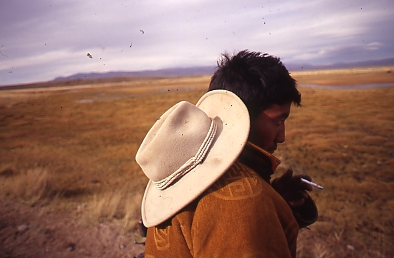

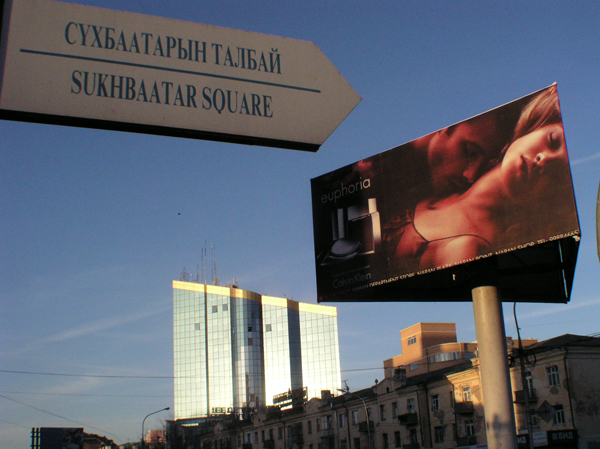
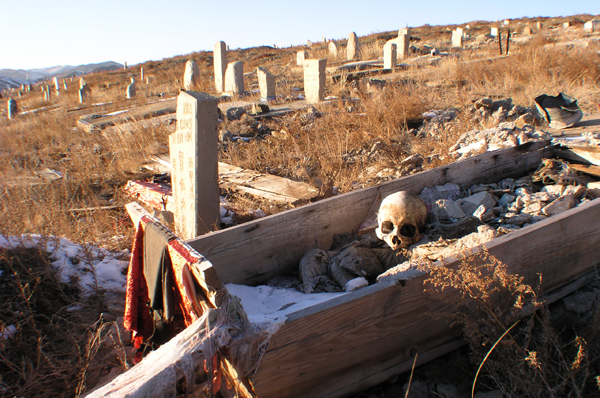
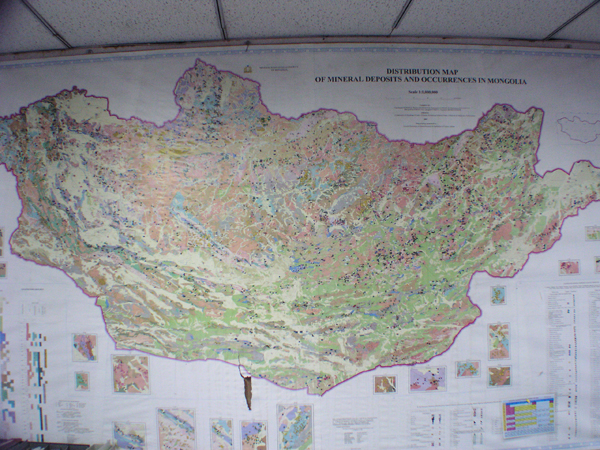
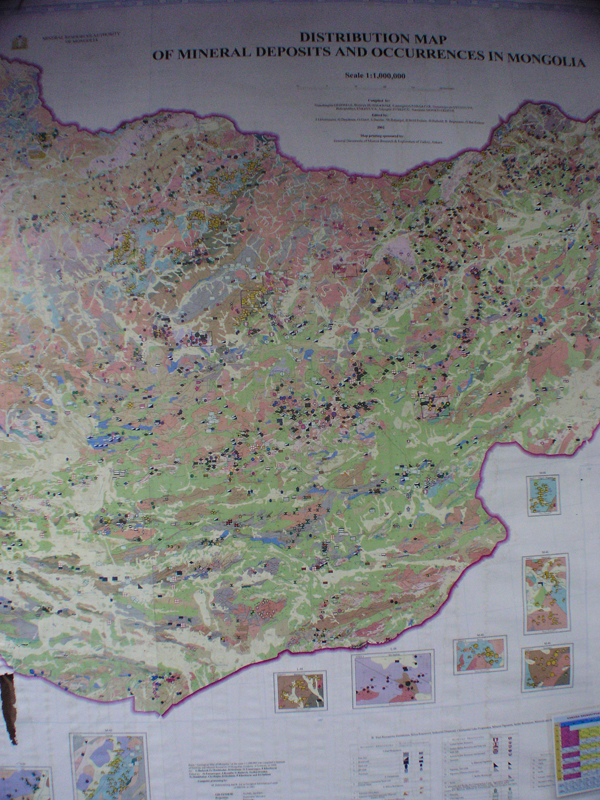
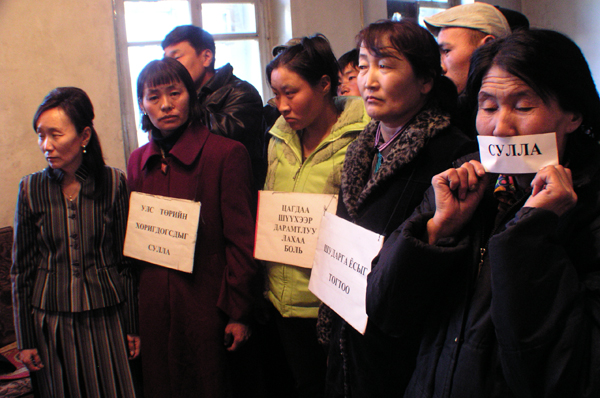



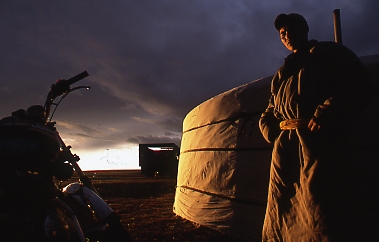
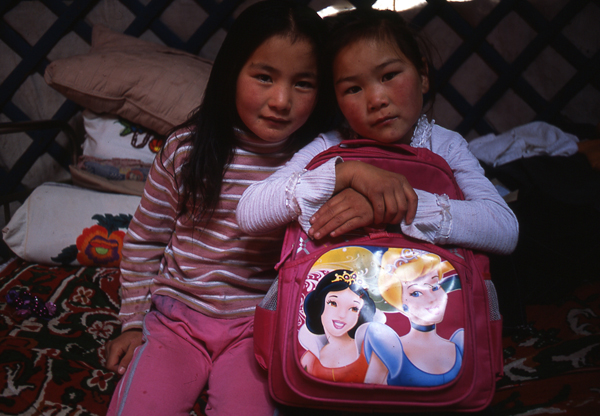
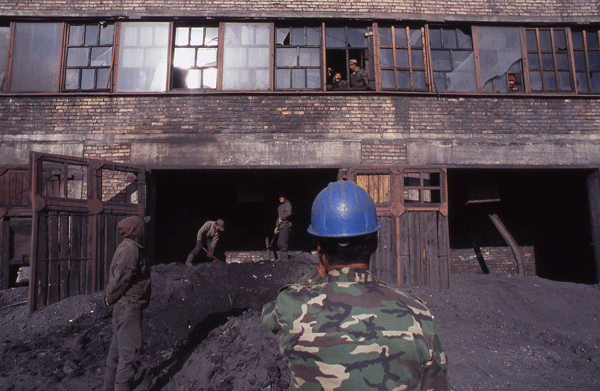
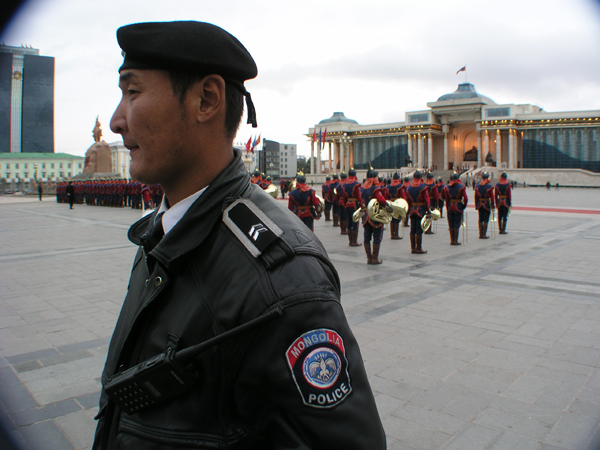
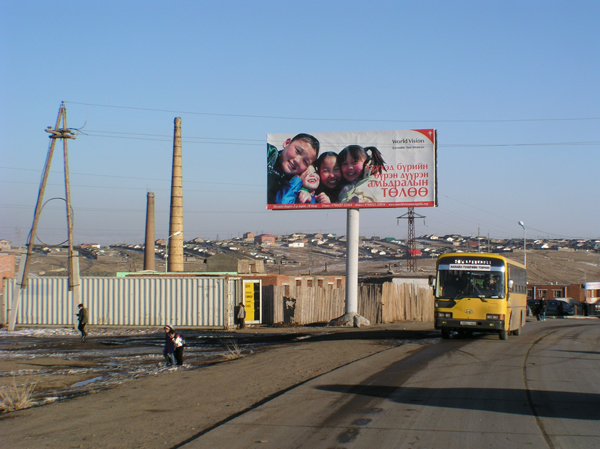
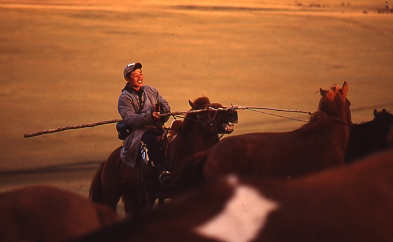
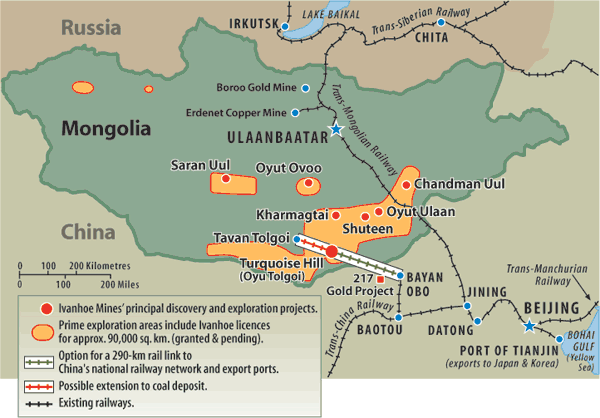
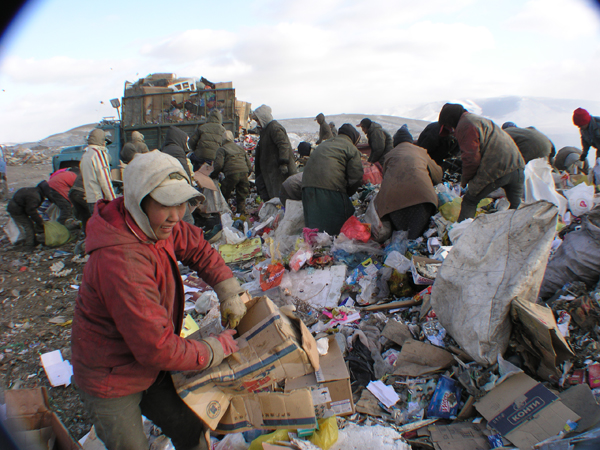
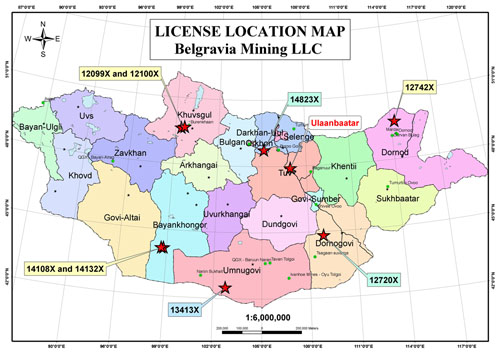
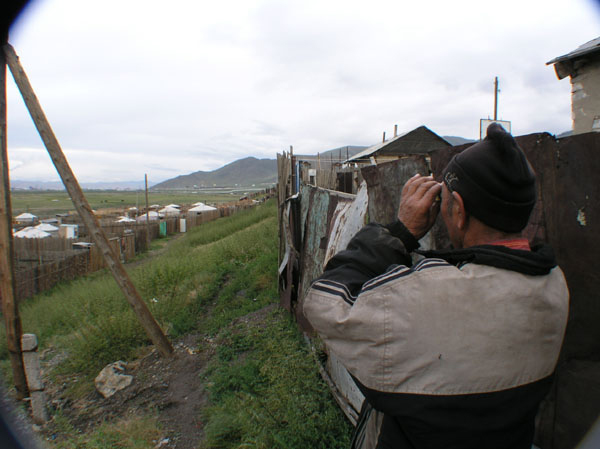
I have been working in Mongolia for 7.5 years in civil society and as a researcher engaged with observing ‘responsible’ mining practices.
This article is sensationalist, biased and lacks in truth in many areas. It seems Keith harmon snow has entered into Mongolia with already foregone conclusions and has shaped his material to suit his own political views.
Snow deals with serious issues in a highly complex mining boom in such a childish way that it sadly does not add content to a very under researched debate.
Bee Tan, are you blind or what? May be you are blinded by those who employed you or paid for your trip to Mongolia! This article is true reflection of front and behind the scene of what’s really going on in Mongolia!!!
Thank you Snow for bringing the truth out!!!
I visited Mongolia several times, and the ecological situation changes to worse rapidly. Foreign mining companies represent one threat, and Chinese penetration is another threat. Mongolian people, unfortunately, are not enough nationalistic to resist these challenges! Stupid Nazi circles were planted there by foreigners to replace the potential of national emergence. Overexploitation of Mongolian resources should be stopped!
Bee Tan,
I would beg to differ. I think he is very well-informed. His writing maybe a little bit all over the place. But it outlines the situation well. It goes in depth and gives a good visual stories about the real situation there, which one cannot find very easily on the internet about Mongolia. Most of the articles I read while researching was biased capitalist people who praises the economic benefits of mining (I am thinking the articles on the Economist) but forgets (or purposely doesn’t mention) the ethics of the mining activities there. I thank Mr.Snow for the in-depth and very explicit article. Amjilt!